
INTERVIEWS
Dr Mohan Prasad GV Chairman of the 76th National Conference of Indian Radiological and Imaging Association (IRIA) Vijayawada
POLICY
Navigating new frontiers: Astrategic shift for India’s USI program

VOL.17 NO 2 PAGES 48 www.expresshealthcare.in
INDIA'S FOREMOSTHEALTHCARE MAGAZINE SINCE 2000MARCH 2024,`50
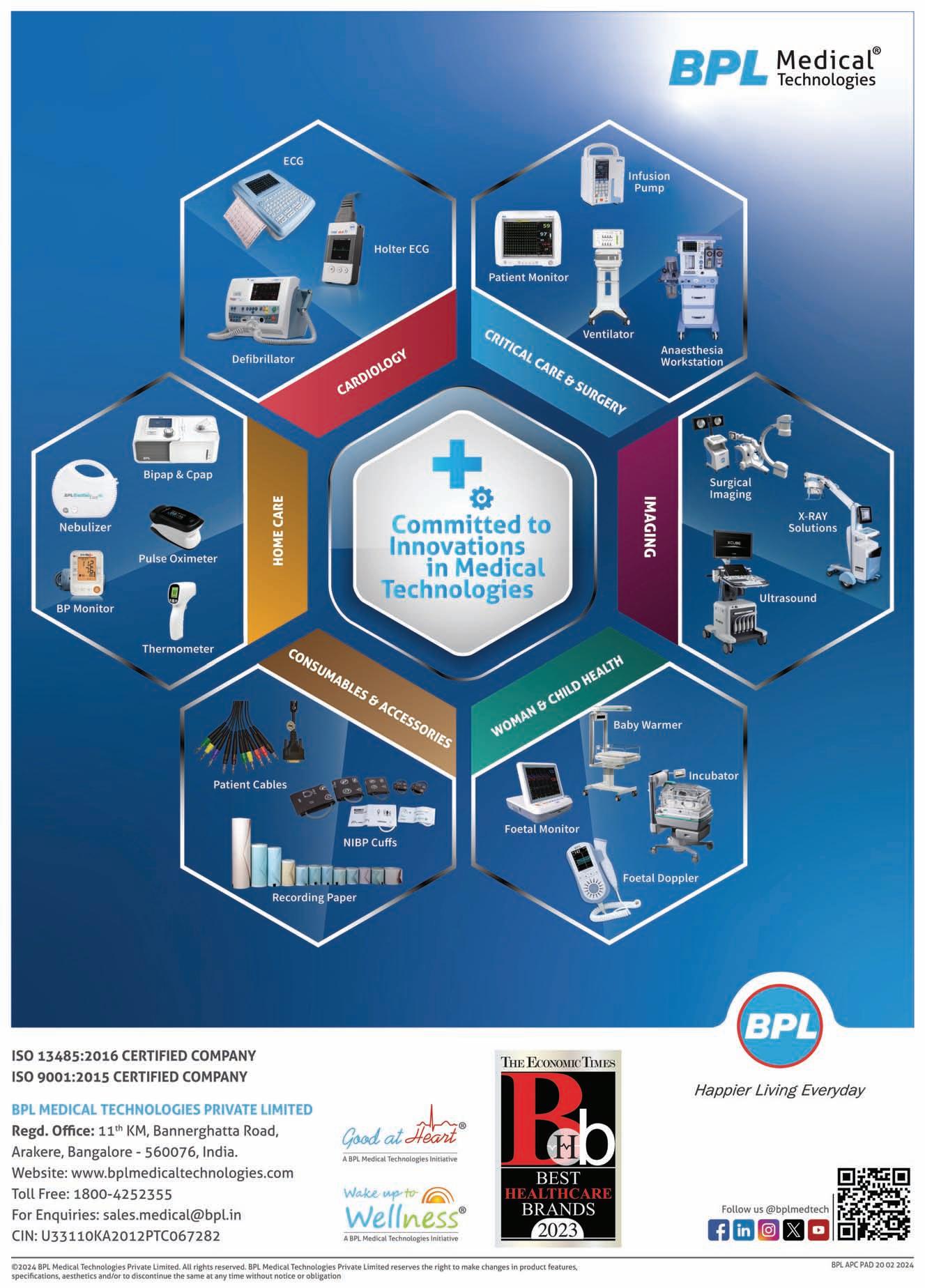































RevealingtheUnseen:
Diagnosewithconfidence,
Clear,Accurateand Comfortable


CLARITY1.5

MUSIC66X16and AllApplication
16ChMRIScannerwith
A SequoiaHealthcarePrivateLimited, PlotNo27,SurveyNo125,KIADBIndustrialArea,Chikkaballapur,Karnataka,INDIA-562101www.sqhpl.com084319
November2023
RevealingtheUnseen:






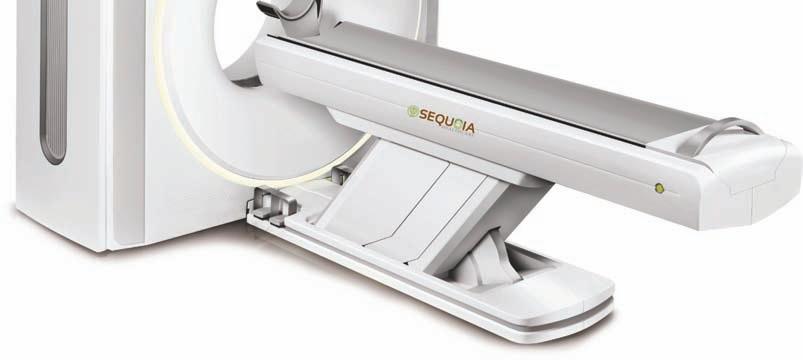
• 75cmGantryAperture • SmartWorkflow
• HDImaging • NewDetectorDesign • Excellent IodineContrast • RangeofApplication • Couch up/down • 0.7sec.RotationTime • Choiceof X-rayTube2/3.3MHu • 45deg.DigitalTilt

INSPIRATION64 November2023
20843sales@sqhpl.comBuildingNo.1,DistrictNo.7,URANUSAvenue,AMTZCampus,NearPragatiMaidan,VMSteelProjects,S.O.Visakhapatnam-530031

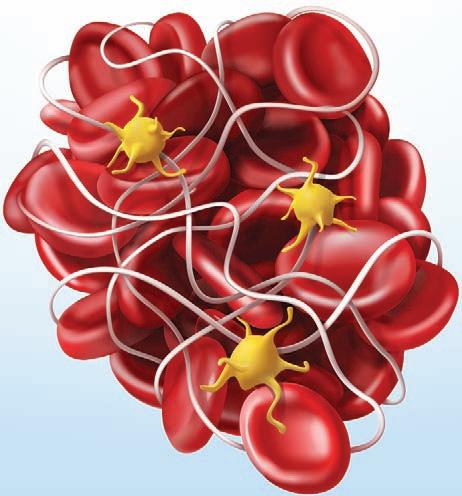

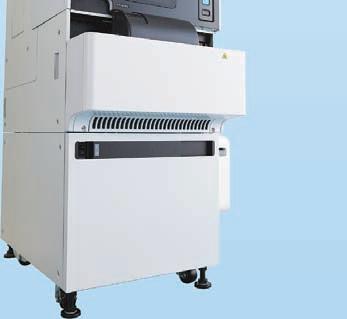



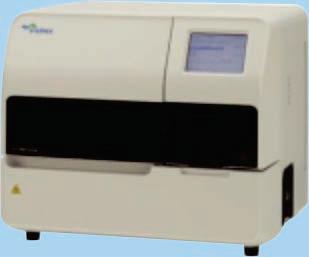
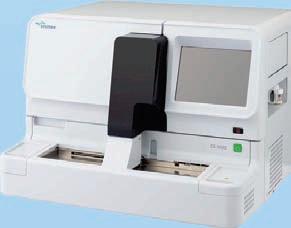
Chairman of the Board
ViveckGoenka
Sr.Vice President-BPD
Neil Viegas
Vice President-BPD
Harit Mohanty
Editor
Viveka Roychowdhury*
Editorial Team
Lakshmipriya Nair
Kalyani Sharma DESIGN
Art Director
Pravin Temble
Senior Designer
Rekha Bisht
Senior Artist
Rakesh Sharma
Marketing Team
Rajesh Bhatkal
Douglas Menezes
Ashish Rampure
Debnarayan Dutta
Production Co-ordinator
DhananjayNidre
Scheduling & Coordination
Pushkar Waralikar
Mohan







P12:


P18: INTERVIEW

March 2024 EXPRESS HEALTHCARE 9
CONTENTS
CIRCULATION
Varadkar Express Healthcare® Regd.With RNI No.MAHENG/2007/22045.Postal Regd.No.MCS/162/2022 - 24.Printed and Published byVaidehi Thakar on behalf of The Indian Express (P) Limited and Printed at The Indian Express Press,Plot No.EL-208,TTC Industrial Area,Mahape,Navi Mumbai-400710 and Published at Mafatlal Centre,7th floor,Ramnath Goenka Marg,Nariman Point,Mumbai 400021. Editor: Viveka Roychowdhury.* (Editorial & Administrative Offices: Mafatlal Centre,7th floor,Ramnath Goenka Marg,Nariman Point,Mumbai 400021) * Responsible for selection of news under the PRB Act.Copyright © 2017.The Indian Express (P) Ltd.All rights reserved throughout the world. Reproduction in anymanner,electronic or otherwise,in whole or in part,without prior written permission is prohibited. HEALTHCARE IT
INTERVIEW MADHAVJOSHI, CEO, India Health Fund POSTEVENT
NAVIGATING NEW FRONTIERS: A STRATEGIC SHIFT FOR INDIA’S USI PROGRAM POLICY
ROLE OFMEDTECH AND NGS IN CANCER DETECTION MEDTECH
P27:
31
32
Vice Chairman & Managing Director,Philips Indian Subcontinent
P16: INTERVIEW DANIELMAZON
MOHAN PRASAD GV Chairman of the 76th National Conference of (IRIA)
INTERVIEW DR
BRIJESH SUNEJA Managing Director,Phantom Healthcare IND Private Limited Pg 20
EDITOR’S NOTE
Patients' gain, healthcare providers' bane?
APIL filed by an NGO, the Veterans Forum for Transparency in Public Life, has brought back the spectre of price control in the healthcare sector. The NGO's PIL pointed out that rates for treatment and surgeries varied widely across private and government healthcare facilities, as well as across metros, cities, and towns.
The NGO's petition quotes Rule 9 of the Clinical Establishment Rules 2012 which mandates that hospitals and clinical establishments must prominently display the rates charged for all services and facilities. The list has to be in English as well as the vernacular language. These rates need to be within the ranges of rates determined and issued by the Center at periodic intervals.
The Supreme Court (SC) has given the Union Health Secretary a month to rectify the situation, failing which it has threatened to consider the NGO's plea to implement standardised rates as per the Central Government Health Scheme (CGHS).
While the diktat revives the price versus quality debate, there is no doubt that patients will benefit if there is more transparency about treatment rates and if rates at private hospitals are standardised. But will what's good for patients, turn out to be unhealthy for healthcare providers?
In response to the apex court's charge, the Association of Healthcare Providers (India) (AHPI) is planning an intervention application in the SC to explain the situation. Healthcare experts like Dr Alexander Thomas, founder and patron, AHPI, aver that CGHS rates are not scientifically calculated and are requesting scientific costing as the basis of pricing. He says pricing should be in a range.
According to Dr Thomas, many studies, including one by the Government of Karnataka, have shed light on a significant gap between the actual cost incurred by private healthcare providers and the reimbursement received from the government for services rendered. This gap not only affects the financial sustainability of healthcare facilities but also has a direct impact on the quality of services provided to patients.
Dr Thomas emphasises that costing methodologies in the healthcare sector must account for various factors, including the type of healthcare provider (primary, secondary, tertiary), location (urban, rural, metro), and accreditation status.
If standards need to be set, then Dr Thomas points out that accreditation bodies like the National Accreditation Board for Hospitals & Healthcare Providers (NABH) have become the gold standard in India, ensuring standardised quality benchmarks across healthcare facilities.
Explaining why differentiating hospitals based on their categorisation is crucial for accurate costing and pricing, Dr Thomas says that while government hospitals, funded by
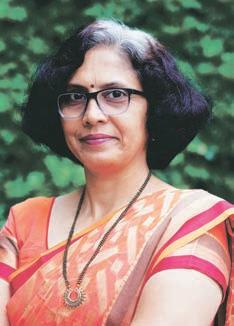
SC diktat on fixing CGHS rates revives debate on pricing methodologies but is it the right sustainable solution?
taxpayers' money, often provide services at subsidised rates, aiming to ensure equitable access to healthcare, private hospitals, on the other hand, operate on a for-profit or sustainable model, necessitating careful consideration of cost structures and pricing strategies.
Refuting the perception of higher costs in private hospitals, Dr Thomas points to several studies that have indicated that the overall costs in government and private hospitals are comparable. However, the subsidy model in government hospitals distorts the true cost of services provided, as these facilities receive financial support from the government.
As adhering to the Clinical Establishment Rules 2012 is vital for the registrations of hospitals, a strict implementation could have severe consequences for the sector. Hospital stocks crashed on February 29 soon after the SC diktat, losing over Rs 15500 crore in market cap, by one estimate.
Analysing the impact of this diktat on the sector, Tausif Shaikh, India Analyst - Pharma and Healthcare, BNP Paribas India reasons that that fears over pricing norms are unwarranted, as the implementation of standardised fees seems unlikely because hospitals differ considerably in terms of infrastructure, instruments used during surgeries, skills, and experience of medical staff and complexity of ailments dealt with. If standardised pricing is introduced, it would negatively impact companies with a higher share of revenue from self-pay/cash while companies with high exposure to government institutional businesses would be least affected.
While the difference in treatment costs of private and public hospitals is typically 30-40 per cent for key specialities such as cardiology, orthopaedic, and neurosciences, the BNP Paribas India analyst believes it is unlikely that even if a fee structure is imposed for private hospitals, the treatment cost would fall significantly to levels anywhere close to that of public hospitals.
The real question is, what would it take to delink cost from quality of care and outcomes? And rebuild the trust in government hospitals? Instead of providing more public health facilities that are affordable, is it right to penalise the private sector? After all, private healthcare has thrived due to the lacunae left by public health facilities. Will fixing CGHS rates for private hospitals be a short-term fix but long-term pain for India's patients?
VIVEKA ROYCHOWDHURY, Editor viveka.r@expressindia.com viveka.roy3@gmail.com
EXPRESS HEALTHCARE March 2024 10

POST-EVENT IRIA 24
INTERVIEW
IRIA24 highlighted the importance of embracing technologyin radiology
Dr Mohan Prasad GV ,Chairman of the 76th National Conference of Indian Radiological and Imaging Association (IRIA) Vijayawada in an interaction with Express Healthcare shares the post-event feedback of IRIA24
Could you provide more details about the theme of IRIA 24 and explain the rationale behind selecting it?
The theme of "Imaging Beyond Imagination" for the IRIA 2024 conference reflects a forward-looking approach towards the rapidly evolving field of radiology and imaging. This theme was chosen with the aim of highlighting the transformative advancements and innovations that are pushing the boundaries of what was once thought possible in medical imaging.
The rationale behind selecting this theme lies in the recognition of the unprecedented technological advancements and breakthroughs that are revolutionising the field of radiology. From the integration of artificial intelligence and machine learning algorithms to the development of cutting-edge imaging modalities and techniques, the landscape of medical imaging is constantly evolving.
By focusing on "Imaging Beyond Imagination," the conference aims to showcase the latest advancements and breakthroughs that are reshaping the future of radiology. It seeks to inspire consultant radiologists, researchers, and radiology postgraduates to embrace innovation, explore new frontiers, and push the boundaries of what is achievable in medical imaging.
Moreover, the theme underscores the importance of imagination and creativity

Radiology training programs should place a strong emphasis on digital literacy and proficiency in using imaging informatics tools,picture archiving and communication systems (PACS),and electronic health record (EHR) systems
in driving inn ovation and progress in radiology. It encourages participants to think beyond conventional boundaries, challenge existing paradigms, and envision new possibilities for advancing patient care and
medical imaging technology. What has been the feedback or response to IRIA 24, and are there any important insights or lessons learned that you would like to share?
The feedback and response to the IRIA 24 conference held in Vijayawada have been overwhelmingly positive. Participants, including delegates, faculty members, and industry representatives, have praised the conference for its exceptional organisation, comprehensive scientific program, very informative trade expo and engaging cultural events. The conference provided a platform for knowledge sharing, networking, and professional development, fostering meaningful discussions and collaborations among participants.
Some important insights and lessons learned from the conference include:
◆ Embracing innovation: The conference highlighted the importance of embracing innovation and technology in the field of radiology. Sessions focusing on artificial intelligence, advanced imaging modalities, and technological advancements underscored the need for radiologists to stay abreast of the latest developments and adapt to changing technologies.
A special session on “Artificial Intelligence in Radiology” by senior scientists from Google Research in California, gave the delegates an opportunity to learn about the latest advancements and applications of artificial intelligence in radiology from leading experts in the field.
◆ Collaboration and networking: The conference provided a valuable opportunity for consultant
radiologists, researchers, professors , teaching professionals and industry partners, to network, exchange ideas, and collaborate on research projects. The importance of collaboration in advancing patient care and driving innovation was emphasised throughout the conference.
◆ Continuing education: The comprehensive scientific program offered a wide range of educational sessions, workshops, and other opportunities for participants to enhance their knowledge and skills in radiology. The conference highlighted the importance of lifelong learning and continuing education for radiologists to stay updated on best practices and advancements in the field.
◆ Prof. Dr Kakarala Subbarao gallery: A special section in the scientific arena was named as Prof. Dr Kakarala Subbarao gallery, showcasing his lifetime collection of the films of rare cases in Radiology. It was a unique opportunity for consultants and postgraduates alike, to see and learn from the vast collection of the world renowned legend in Radiology, late Dr Kakarla Subbarao.
The Prof. Dr. Kakarla Subbarao gallery at IRIA 2024 emerged as one of the standout highlights of the conference, offering participants a rare and invaluable opportunity to delve into the extensive collection of rare radiological cases curated by the esteemed late Dr. Subbarao.
As a world-renowned
EXPRESS HEALTHCARE March 2024 12
legend in the field of Radiology, Dr. Subbarao's lifetime collection showcased a diverse range of challenging and unique cases, providing attendees with unparalleled educational insights and learning experiences. Consultants and postgraduates alike benefited from studying these cases, gaining a deeper understanding of diagnostic nuances, differential diagnoses, and clinical implications.
Moreover, the gallery served as a tribute to Dr. Subbarao's enduring legacy and contributions to the field, inspiring attendees to uphold his commitment to excellence in patient care and to strive for continued advancements in the practice of Radiology.
Prof. Dr. Kakarla Subbarao’s gallery in this conference IRIA-2024, stood as a testament to the remarkable career of a pioneering figure in Radiology and left a lasting impact on all who had the privilege to explore its contents.
◆ Cultural integration: The inclusion of cultural events and activities added a unique dimension to the conference, showcasing the rich cultural heritage of the region and fostering camaraderie among participants. The conference demonstrated the importance of incorporating cultural elements on the sidelines of academic events to create a well-rounded and enriching experience for attendees.
◆ Trade participation: The participation of trade partners in huge numbers in IRIA 2024 at Vijayawada and the display of their latest innovations, highlighted the importance of collaboration between industry and academia in driving technological advancements and improving patient care in radiology.
One important insight from the conference is the growing integration of artificial intelligence (AI) and machine learning tools
into radiological equipment, as demonstrated by the display of upcoming models by several companies. These advancements are expected to revolutionise the field of radiology by making diagnosis more efficient, accurate, and accessible.
In total, the IRIA 24 conference in Vijayawada provided a platform for knowledge sharing, networking, and collaboration, while also showcasing the latest advancements and trends shaping the future of radiology.
The positive feedback and valuable insights gained from the conference will undoubtedly inform future conferences and initiatives aimed at advancing the practice of radiology and improving patient care.
What emerging trends do you anticipate will significantly influence the future of radiology and imaging?
Several emerging trends are poised to significantly influence the future of radiology and imaging:
1. Artificial Intelligence (AI) and Machine learning: AI-powered algorithms are revolutionising medical imaging by enabling faster and more accurate image analysis, interpretation, and diagnosis. AI algorithms can assist radiologists in detecting abnormalities, quantifying disease severity, and predicting patient outcomes, thereby enhancing diagnostic accuracy and efficiency.
2. Advanced imaging modalities: Advances in imaging technologies, such as MRI, CT, PET-CT,PETMR and ultrasound, continue to improve image quality, resolution, and diagnostic capabilities. Inn ovations in contrast agents, hardware, and software are expanding the scope of imaging modalities and enabling noninvasive visualisation of physiological processes at the molecular level.
3. Personalised medicine: The integration of imaging
data with genetic, molecular, and clinical information is enabling the development of personalised diagnostic and treatment strategies tailored to individual patient characteristics. Radiomics, radiogenomics, and imaging biomarkers are emerging as powerful tools for predicting treatment response, guiding therapy selection, and monitoring disease progression.
4. Image-guided interventions: Imageguided interventions, such as minimally invasive surgeries, targeted therapies, and image-guided radiation therapy, are becoming increasingly prevalent in clinical practice. Advances in image fusion, navigation systems, and real-time imaging techniques are enhancing the accuracy, safety, and effectiveness of these procedures, leading to improved patient outcomes.
5. Point-of-care imaging: Portable and handheld imaging devices are facilitating point-of-care imaging in diverse clinical settings, including emergency departments, intensive care units, and ambulatory care settings. These compact and costeffective devices enable rapid diagnosis, triage, and treatment decisions, particularly in resourcelimited settings and remote areas.
6. 3D printing and virtual reality: 3D printing and virtual reality technologies are likely to transform the field of radiology by enabling the creation of patientspecific anatomical models, surgical guides, and simulation tools. These technologies enhance preoperative planning, surgical navigation, and medical education, leading to improved surgical outcomes and enhanced training experiences.
All these emerging trends hold immense potential to revolutionise the practice of radiology and imaging, enabling more accurate diagnoses, personalised treatment approaches, and
improved patient outcomes in the years to come.
Given the increasing role of technology in the field, how do you envision the training and skill development of the upcoming generation of radiologists?
The increasing role of technology in radiology necessitates a shift in the training and skill development of the upcoming generation of radiologists. Here's how I envision it:
◆ Emphasis on digital literacy: Radiology training programs should place a strong emphasis on digital literacy and proficiency in using imaging informatics tools, picture archiving and communication systems (PACS), and electronic health record (EHR) systems. Radiologists need to be adept at navigating digital platforms, analysing big data, and integrating digital imaging with other clinical information.
◆ Training in AI: With the growing adoption of AI in radiology, training programs should incorporate education in machine learning algorithms, deep learning techniques, and AI applications in medical imaging. Radiologists need to understand how AI algorithms work, how to interpret AI-generated results, and how to integrate AI tools into their clinical practice effectively.
◆ Advanced imaging techniques: Training programs should provide exposure to advanced imaging modalities, such as MRI, CT, PET-CT,PET-MR and molecular imaging, and hands-on experience with state-of-the-art imaging equipment and techniques. Radiologists should be proficient in interpreting complex imaging studies and understanding the clinical implications of advanced imaging findings.
◆ Subspecialty training: Given the increasing specialisation within radiology, training programs should offer opportunities for
subspecialty training in areas such as neuroradiology, musculoskeletal imaging, interventional radiology, and pediatric radiology. Radiologists should develop expertise in their chosen subspecialty area to provide specialised care and consultation.
◆ Interdisciplinary collaboration: Training programs should encourage interdisciplinary collaboration and teamwork, fostering partnerships with clinicians, surgeons, pathologists, and other healthcare professionals. Radiologists should develop effective communication skills and the ability to collaborate across disciplines to provide comprehensive patient care.
◆ Lifelong learning: Radiology is a rapidly evolving field, and continuous learning is essential for staying updated on new technologies, techniques, and best practices. Training programs should instill a culture of lifelong learning and professional development, encouraging radiologists to participate in continuing medical education (CME) activities, conferences, and research endeavors throughout their careers.
On the whole, the training and skill development of the upcoming generation of radiologists should be tailored to meet the demands of a technology-driven healthcare landscape, equipping them with the knowledge, skills, and expertise needed to excel in the field of radiology.
What are the existing challenges in terms of technology integration and skill enhancement, or any other factors that require attention in the field of radiology in India?
In the field of radiology in India, several challenges exist in terms of technology integration, skill enhancement, and other factors that require attention:
March 2024 EXPRESS HEALTHCARE 13
POST-EVENT IRIA 24
◆ Infrastructure and equipment: Access to advanced imaging equipment and infrastructure varies across different regions of India. Rural and underserved areas often lack access to state-of-the-art imaging facilities, leading to disparities in healthcare delivery. Ensuring equitable distribution of imaging resources and upgrading existing infrastructure is essential to address this challenge.
◆ Training and education: There is a need for standardised training programs and continuing
education opportunities for radiologists and radiology technologists in India. Training programs should focus on the latest imaging techniques, technologies, and best practices to enhance the skills and expertise of healthcare professionals in the field of radiology.
◆ Workforce shortage: There is a shortage of skilled radiologists and radiology technologists in India, particularly in rural and remote areas. Efforts should be made to attract and retain talent in the field of radiology through incentives,
scholarships, and training programs.
◆ Quality assurance and regulation: Ensuring quality assurance and adherence to regulatory standards in radiology practice is crucial to maintaining patient safety and quality of care.
In India, there are already robust quality assurance programs, accreditation standards, and regulatory frameworks to monitor and regulate the practice of radiology in India, but with better involvement of all the stakeholders, more so the rationalisation in implementing them needs to
1.Place of Publication:Mafatlal Centre, 7th floor, Ramnath Goenka Marg, Nariman Point, Mumbai 400021
2.Periodicity of its publication:Monthly
3.Printer’s Name:Ms.Vaidehi Thakar
Whether citizen of India:Yes
Address:Mafatlal Centre, 7th floor, Ramnath Goenka Marg, Nariman Point, Mumbai 400021
4.Publisher’s Name:Ms.Vaidehi Thakar
Whether citizen of India:Yes
Address:Mafatlal Centre, 7th floor, Ramnath Goenka Marg, Nariman Point, Mumbai 400021
5.Editor’s Name:Ms.Viveka Roychowdhury
Whether citizen of India:Yes
Address:Mafatlal Centre, 7th floor, Ramnath Goenka Marg, Nariman Point, Mumbai 400021
6.Name and address of individuals:The Indian Express (P) Ltd who own the newspaperMafatlal Centre, 7th floor, Ramnath Goenka Marg, Nariman Point, Mumbai 400021
AND
Shareholders holding more than:Indian Express Holdings & Entp
One per cent of the total capitalPrivate Limited
Mafatlal Centre, 7th floor, Ramnath Goenka Marg, Nariman Point, Mumbai 400021
:Mr.Viveck Goenka & Mr.Anant Goenka Mafatlal Centre, 7th floor, Ramnath Goenka Marg, Nariman Point, Mumbai 400021
:Mr.Shekhar Gupta & Mrs.Neelam Jolly C-6/53, Safdarjung Development Area New Delhi 110 016
I, Vaidehi Thakar, hereby declare that the particulars given above are true and to the best of my knowledge and belief.
sd/Vaidehi Thakar
Date :1/3/2024 Publisher
get further more focus radiologists, through the involvement of Indian Radiological and Imaging Association, IRIA which is already spearheading the cause for uplifting the standards of Radiologists and also the Radiology practice in India..
For the past few years, IRIA turned out to be one of the important Radiology associations in the world, due to it’s pioneering efforts in many educational and standard raising initiatives for Radiologists, launched in the recent years and won the accolades of many Radiology associations worldwide.
◆ Integration of AI: While AI holds immense potential to enhance the efficiency and accuracy of radiology practice, its integration into clinical workflows poses challenges related to data privacy, algorithm validation, and ethical considerations.
Establishing guidelines and frameworks for AI implementation and ensuring transparency and accountability in AI-driven decision-making processes are essential.
◆ Interdisciplinary collaboration: Strengthening interdisciplinary collaboration and communication between radiologists, referring clinicians, and other healthcare professionals is essential to delivering integrated and patientcentered care. Improving communication channels, promoting multidisciplinary tumor boards, and fostering a culture of teamwork and collaboration can enhance patient outcomes and streamline care delivery processes.
Addressing these challenges requires concerted efforts from policymakers, Radiologists, other healthcare providers, professional organisations, and industry stakeholders to promote inn ovation, investment, and collaboration in the field of radiology in India. By addressing these challenges,
we can work towards building a more resilient, efficient, and patientcentered radiology healthcare system in India.
Are there any noteworthy international practices that, if adopted, could potentially revolutionise the radiology sector in India?
Yes, several noteworthy international practices in the field of radiology have the potential to further revolutionise the sector in India:
◆ Teleradiology: Teleradiology is widely adopted in many countries to address the shortage of radiologists and improve access to imaging services, particularly in rural and underserved areas. By leveraging digital technologies and telecommunication networks, teleradiology enables remote interpretation of imaging studies by radiologists located in different locations. Teleradiology practice has picked up quite fast in the past few years and now the problem of the shortage of Radiologists is almost addressed. Adopting teleradiology practices further, more so in rural and semi urban areas can help bridge the gap in radiologist shortage in these remote areas and enhance access to timely and accurate diagnoses in all parts of India.
◆ Sub specialisation: Many countries have adopted sub specialisation within radiology, wherein radiologists focus on specific areas such as neuroradiology, musculoskeletal imaging, interventional radiology, and breast imaging. Sub specialisation enhances diagnostic accuracy, improves patient outcomes, and promotes interdisciplinary collaboration. Introducing subspecialty training programs and promoting collaboration between radiologists and other
EXPRESS HEALTHCARE March 2024 14
OWNERSHIP
OF EXPRESS HEALTHCARE, MUMBAI, AS REQUIRED UNDER RULE 8 OF THE REGISTRATION OF NEWSPAPERS (CENTRAL)
1956 FORM IV
STATEMENT ABOUT
AND OTHER PARTICULARS
RULES,
(SEE RULE 8)
POST-EVENT IRIA 24
specialists can enhance the quality of radiology services in India.
◆ Picture Archiving and Communication Systems (PACS): PACS facilitates the storage, retrieval, distribution, and viewing of medical images from multiple modalities and locations. PACS streamlines workflow, enhances communication between healthcare providers, and improves access to imaging studies for timely decisionmaking. Implementing PACS solutions in Indian healthcare institutions can enhance efficiency, reduce turnaround times, and improve patient care in radiology departments.
◆ AI integration: Several countries are integrating artificial intelligence (AI) technologies into radiology practice to augment radiologists' capabilities, improve diagnostic accuracy, and optimise workflow efficiency. AI applications include image interpretation, computer-aided diagnosis, predictive analytics, and workflow automation.
Embracing AI technologies and fostering collaboration between radiologists and data scientists can accelerate the adoption of AI-driven solutions in Indian radiology practice, leading to enhanced patient care and outcomes.
By adopting these international best practices and leve raging i nnovative technologies, India can
revolutionise its radiology sector, enhance access to imaging services, improve diagnostic accuracy, and optimise patient care delivery across the healthcare continuum.
How essential do you believe Public-Private Partnerships (PPPs) are in the context of radiology and imaging in India?
PPPs play a crucial role in the context of radiology and imaging in India for several reasons:
◆ Infrastructure development: PPPs can facilitate the development of state-of-the-art imaging facilities and infrastructure by leveraging the expertise and resources of both public and private sectors. This collaboration can help address the infrastructure gap, particularly in underserved areas, and improve access to quality imaging services for patients across the country.
◆ Technology access: PPPs enable the adoption of advanced imaging technologies and equipment by pooling together resources from public and private entities. This collaboration can lead to the procurement of cutting-edge imaging modalities, such as MRI, CT, and PET-CT scanners, which may otherwise be cost-prohibitive for individual healthcare institutions or government agencies.
◆ Capacity building: PPPs can support capacity building initiatives by facilitating training programs, continuing education, and skill enhancement opportunities for radiologists, radiographers, and other healthcare professionals. This collaboration can enhance the quality and efficiency of radiology services through the exchange of knowledge, expertise, and best practices between public and private partners.
◆ Service delivery: PPPs can improve the delivery of radiology services by fostering inn ovation, efficiency, and patientcentered care. Private sector involvement can bring in management expertise, operational efficiencies, and service quality standards, while public sector engagement ensures equitable access, affordability, and accountability in service delivery.
◆ Research and innovation: PPPs can promote research and inn ovation in radiology and imaging by supporting collaborative research projects, technology transfer initiatives, and academicindustry partnerships. This collaboration can drive advancements in imaging technology, diagnostic techniques, and treatment modalities, leading to improved patient outcomes
and healthcare outcomes. PPPs are thus essential in the context of radiology and imaging in India as they facilitate collaboration, resource mobilisation, and innovat ion between public and private sectors. By harnessing the strengths of both sectors, PPPs can contribute to the development of a robust and sustainable radiology ecosystem that meets the evolving healthcare needs of the population.
AWord Of Mention About The Trade Expo In Iria2024
The trade expo played a pivotal role in the success of the IRIA 2024 Conference by providing a platform for industry partners to showcase their latest innovations, products and technologies in the field of radiology and imaging. representatives, Radiology
The trade expo served as a hub for networking, collaboration, and knowledge exchange between industry health care professionals, and researchers
Key points of the trade expo include:
◆ Display of innovations: The trade expo featured displays of cutting-edge radiological equipment, diagnostic tools, software solutions, and medical devices from leading companies. Attendees had the opportunity to explore
and interact with the latest innovat ions in imaging technology, including advancements in artificial intelligence, machine learning, and image analysis.
◆ Education and training: Industry partners supported workshops, sessions and demonstrations to educate the delegates about the capabilities and features of their products. These sessions provided valuable insights into the practical applications professionals.of new technologies and facilitated learning opportunities for healthcare
◆ Product launches and demonstrations: Many companies used the trade expo as a platform to launch new products, unveil upcoming technologies, and demonstrate the capabilities of their offerings. These product launches and demonstrations generated excitement and interest among attendees and contributed to the overall success of the conference.
◆ Networking and relationship building: The trade expo provided a conducive environment for networking, relationship building, and professional networking. The delegates had the opportunity to interact with industry leaders, experts, and peers, exchange ideas, share experiences, and forge new connections that can lead to future collaborations and partnerships.

March 2024 EXPRESS HEALTHCARE 15
POST-EVENT IRIA 24
At IRIA2024,Philips launched its state-of-the-art
Compact Ultrasound System 5000 series
Daniel Mazon ,Vice Chairman & Managing Director,Philips Indian Subcontinent talks about the innovative solutions showcased and launched by Philips at IRIA24 and shares his company’s overall experience at the conference
What innovative solutions or technologies your company showcased at IRIA 2024?
Philips presented its powerful suite of AI-driven enterprise imaging portfolio, including next generation Ultrasound, MRI and CT systems at IRIA 2024. As a key attraction, the company showcased its revolutionary MRI with BlueSeal magnet, the industry's first and only wide bore 1.5T fully sealed magnet, which relieves healthcare providers from helium-related complications and unpredictability. This revolutionary magnet operates with only seven liters of liquid helium and is fully sealed – freeing up the minds of healthcare providers from potential helium complications. With BlueSeal magnet, Philips aims to help MRI facilities overcome potential helium-related issues of classic magnet design and eliminate radiology department's dependency on scarce helium supply.
Philips also showcased the Spectral CT 7500 systems which enables healthcare providers to convert deep clinical data into valuable diagnostic information using simple, routine scanning with seamless integration of spectral data into their reading environment. Given the increased demand, pressure on staff, and cost challenges that imaging organisations face today, there is a massive need for imaging that’s first-time right. Philips Spectral CT 7500 addresses these requirements as it offers a fast, always-on, low-dose path to precision diagnosis.

In addition to these revolutionary technologies, Philips presented ‘Made in India’ Affiniti Ultrasound System and Zenition Mobile C-Arm with flat panel detectors at IRIA 2024. A premium-quality Ultrasound system, Affiniti series is India’s most esteemed series from Philips Ultrasound with 3000+ installations across the country. Affiniti series of ultrasound systems offer doctors a powerful combination of performance and workflow for quick and efficient diagnosis with low operating cost. Philips Zenition supports increased OR performance across the healthcare facility. The platform’s tablet-like user interface and simple ‘Unify’ workflow mean that once an operator has learned to use one system on the platform, it is easy for them to operate them all. Zenition’s compact design, Position Memory
feature and BodySmart software, which captures fast and consistent images even at the edge of the image intensifier or flat detector, reduce the need for C-arm repositioning by 45 per cent.
How do these offerings contribute to the advancement of radiology and imaging and patient care?
The innovative smart solutions that were showcased from Philips’ MRI, CT, Ultrasound and AI product portfolios at IRIA 2024 enable healthcare providers to improve operational performance and workflow efficiency while empowering them to make more-informed clinical decisions. The advanced imaging solutions presented by Philips embed intelligence at each step of their workflow and disease management procedure. Philips’ vast range of products
increases accessibility to healthcare by harnessing the power of Artificial Intelligence and enabling healthcare providers in delivering the right treatment to the right patient at the right time.
Have you launched any new product or announced any new collaboration at IRIA 24?
At IRIA 2024, Philips launched its state-of-the-art Compact Ultrasound System 5000 series, which offers performance and portability in a compact system based on the company’s premium ultrasound capabilities. This solution enables healthcare providers to experience a portable ultrasound system which offers exceptional clinical performance across general imaging, cardiology, Ob/Gyn and point of care. Utilising Philips advances for premium ultrasound image quality in a compact form, the Compact Ultrasound 5000 series has been expertly designed for both portability and performance. The system also offers 34 per cent greater image resolution and sensitivity, 83 per cent enhanced visualisation and 95 per cent enhanced diagnostic confidence.
What trends do you foresee shaping the future of radiology and imaging, and how is your company preparing to adapt to these changes?
The increased demand for medical imaging over the last few years, especially because of the pandemic, has resulted in radiology workflows becoming more complex. These developments have
necessitated the development of new and innovative ways of working that help in enhancing productivity, accuracy and ultimately, outcomes. Philips has observed these trends and introduced products that address the immediate challenges faced by healthcare providers and clinicians. Some of the key trends observed globally include:
◆ AI-powered workflow automation and optimisation: As healthcare organisations are faced with persistent staff shortages, they are adapting their workforce strategies to attract and retain talent. Increasingly, they are also turning to automation and AI as a way of accelerating routine tasks and measurements to alleviate the burden on healthcare professionals. In diagnostic imaging, for example, integration of AI into CT systems can automate radiographers’ most timeconsuming steps so that they can spend more time focusing on the patient. AI-based reconstruction is then used to deliver the high image quality that radiologists need to make a precise diagnosis. AI can also take the complexity out of cardiac ultrasound through full 3D quantification and modeling of the heart and other automated measurements. This helps sonographers acquire and analyse images the right way, while enabling clinicians to provide better and more efficient cardiac care.
◆ Virtual collaboration addressing staff and expertise shortages: A healthcare technology trend that goes hand in hand with
EXPRESS HEALTHCARE March 2024 16
INTERVIEW
POST-EVENT IRIA 24
automation is the use of virtual collaboration to mitigate the impact of staff and expertise shortages.
Expected growth in this area has the added benefit of improving access to care in remote and rural areas, where specialist staff tends to be in particularly short supply.
Continued adoption of radiology operations command centers is a prime example. This cloud-based hub-and-spoke model enables virtual over-the-shoulder support from expert imaging technologists to their less experienced or specialised colleagues at remote sites, while the patient is on the scanner table. Similarly, realtime virtual collaboration in ultrasound can extend the reach of specialist care –allowing physicians to remotely communicate with their team and with patients whether they are in a hospital, clinic or remote satellite office. In both cases, virtual collaboration can help make expertise more widely available to achieve the same standard of care throughout a health system.
Any key takeaway from IRIA 24?
◆ Radiologists showed considerable enthusiasm at the unveiling of the Compact 5000 series, a new premium portable ultrasound from Philips, which addresses their needs in hospital settings effectively
◆ Epiq Elite 10.0 received widespread acclaim from radiologists for its significant improvements in workflow, features, and image quality compared to previous iterations, marking a significant advancement in ultrasound technology
◆ Attendees were impressed by Philips' Helium-free technology, recognising it as a step in the right direction towards a more sustainable future
◆ The clinical capabilities of Philips dual-layer spectral CT in advanced cardiac and oncology care generated excitement among visitors, highlighting its potential to elevate diagnostic
capabilities in these critical areas
◆ Both current users and prospective customers dedicated substantial time to
explore demonstrations of Philips' AI-powered diagnostic imaging solutions, such as Smart Speed MR and Precise-CT. They expressed
keen interest in integrating these AI solutions into their routine clinical practices to streamline workflows and achieve better patient
outcomes
Overall, the response to Philips' new innovations was overwhelmingly positive among attendees.
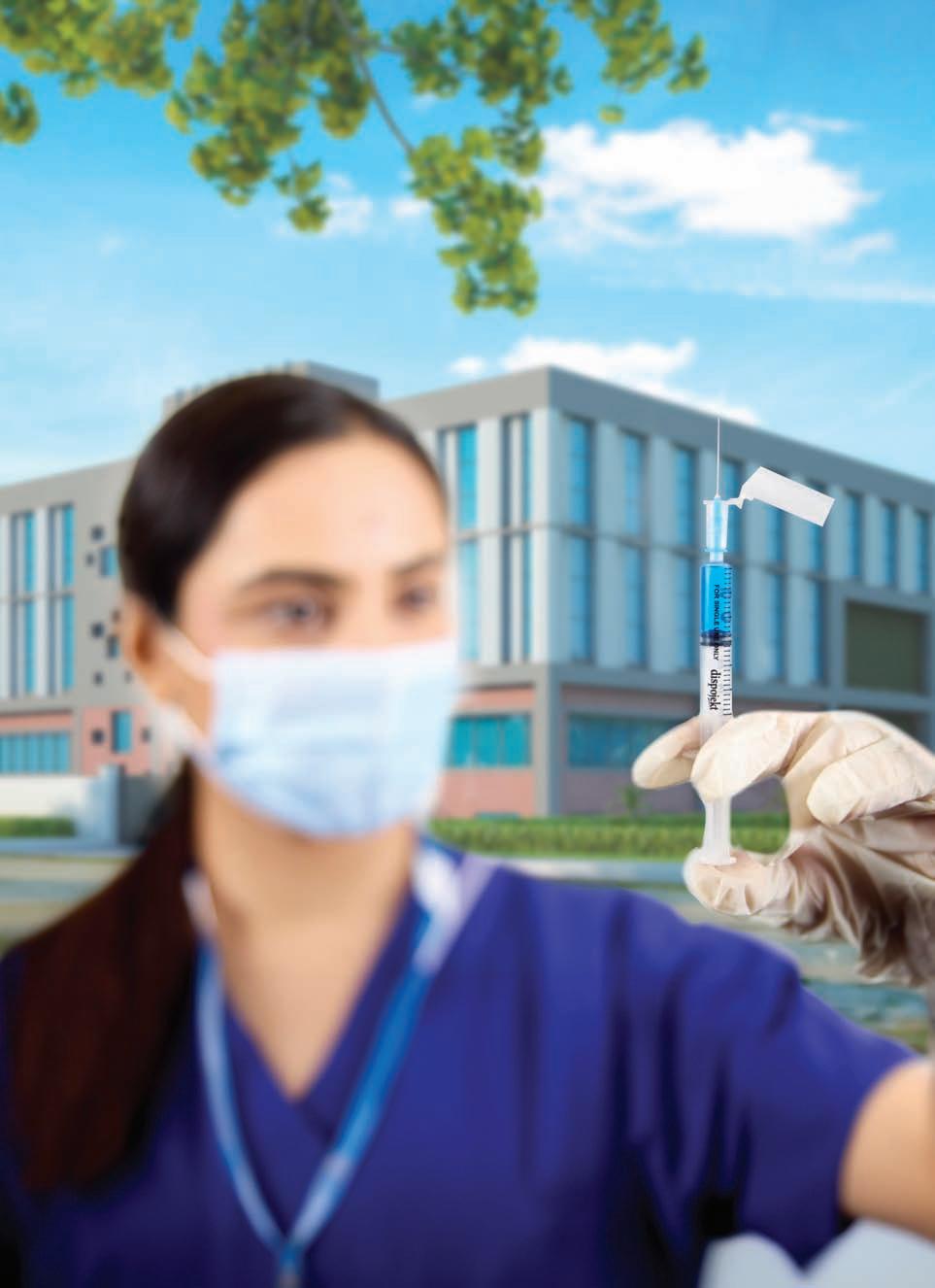

DispojektSyringe withsafetyneedle www.hmdhealthcare.com March 2024 EXPRESS HEALTHCARE 17
POST-EVENT IRIA 24
Offerings presented at IRIA24 contribute significantlyto advancement of radiology
Brijesh
Suneja ,Managing Director,Phantom Healthcare IND Private Limited shares his company's experience at IRIA24
What innovative solutions or technologies your company showcased at IRIA 24?
At IRIA 24, our company was thrilled to present several groundbreaking advancements in the field of medical imaging and radiology. Among the highlights were:
◆ AI-driven Imaging Software (Glassbeam Technology): We unveiled a new suite of artificial intelligence (AI) algorithms designed to enhance diagnostic accuracy and streamline workflow efficiency. These algorithms leverage deep learning techniques to assist radiologists in interpreting images more rapidly and accurately.
◆ High-resolution imaging systems: Our latest generation of imaging systems boasts unparalleled resolution and image clarity, providing clinicians with unprecedented detail for accurate diagnosis and treatment planning.
◆ Radiation reduction technologies: Recognising the importance of patient safety, we showcased innovative technologies aimed at minimising radiation exposure during imaging procedures. These advancements prioritise dose optimisation without compromising image quality, ensuring the highest standards of patient care.
How do these offerings contribute to the advancement of radiology and imaging and patient care?
The offerings presented at IRIA 24 contribute
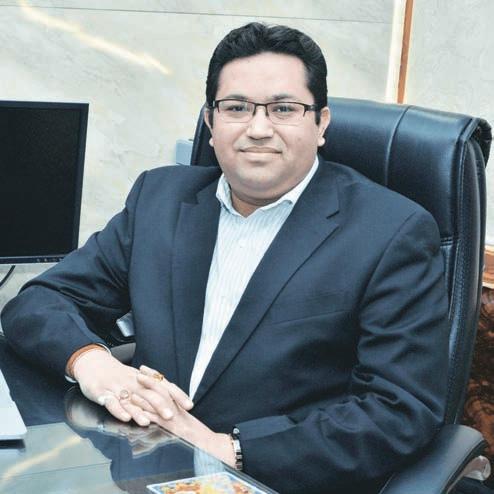
Recognising the importance of patient safety,we showcased innovative technologies aimed at minimising radiation exposure during imaging procedures
significantly to the advancement of radiology, imaging, and patient care in several ways:
◆ Enhanced diagnostic accuracy: AI-driven imaging software assists radiologists in interpreting images more accurately and efficiently. By leveraging machine learning algorithms, these solutions can identify subtle patterns and anomalies that might be overlooked by human observers, leading to earlier and more precise diagnoses.
◆ Improved workflow
efficiency: This facilitates rapid consultations, enhances interdisciplinary communication, and streamlines workflow processes, ultimately reducing turnaround times and improving patient care delivery.
◆ Optimised patient safety: Radiation reduction technologies prioritise dose optimisation without compromising image quality, minimising the potential risks associated with excessive radiation exposure during
imaging procedures. This helps ensure the safety and well-being of patients undergoing diagnostic evaluations and therapeutic interventions.
◆ Enhanced visualisation and planning: Integration technology into imaging processes enables radiologists to visualise complex anatomical structures in three dimensions, enhancing their ability to interpret images and plan interventions with greater precision. This immersive visualisation enhances diagnostic confidence and enables more accurate treatment planning, leading to improved patient outcomes.
◆ Access to specialised expertise: This expands access to quality care, particularly in underserved or remote areas, and ensures that patients receive timely and expert-driven diagnoses and treatment recommendations.
Have you launched any new products or announced any new collaborations at IRIA 24?
We have consistently unveiled a variety of products in different domains. Initially, we were dealing in MRI and CT Scanners of GE Refurbished models but with the expansion of our organisation now we have started dealing in MRI of Seimens Refurbished models. This year itself we launched the Philips Refurbished Cathlabs Machine. In the coming times, we are aiming to launch PET-CT Scanners and Bone-densitometer
Any key takeaway from
IRIA 24?
Certainly! Key takeaways from IRIA 24, the annual medical conference of the Indian Radiological & Imaging Society, may include:
◆ Advancements in AI and Machine Learning: The integration of AI and machine learning algorithms continues to revolutionise the field of radiology and imaging. At IRIA 24, attendees may have witnessed the latest developments in AI-driven diagnostic tools, workflow optimisation solutions, and predictive analytics applications aimed at enhancing diagnostic accuracy and improving patient outcomes.
◆ Focus on patient-centric care: The conference likely emphasised the importance of patient-centric care in radiology and imaging practices. Discussions and presentations may have centered around strategies for optimising patient safety, minimising radiation exposure, and improving the overall patient experience through innovative technologies and workflow enhancements.
◆ Interdisciplinary collaboration: IRIA 24 likely underscored the significance of interdisciplinary collaboration and communication among healthcare professionals. With the increasing complexity of medical imaging studies and treatment protocols, effective collaboration between radiologists, clinicians, technologists, and other stakeholders is essential for delivering comprehensive and integrated patient care.
◆ Emerging trends in
EXPRESS HEALTHCARE March 2024 18
INTERVIEW
POST-EVENT IRIA 24
imaging modalities: Attendees may have gained insights into emerging trends and advancements in imaging modalities, such as MRI, CT, ultrasound, and molecular imaging. Presentations and exhibitor showcases may have highlighted novel imaging techniques, hardware innovations, and software developments aimed at expanding diagnostic capabilities and improving image quality.
◆ Continuing education and professional development: IRIA 24 likely provided valuable opportunities for continuing education and professional development for radiologists, imaging technologists, and other healthcare professionals. Attendees may have participated in educational
sessions, workshops, and hands-on training experiences designed to enhance their clinical skills, knowledge base, and proficiency in the latest imaging technologies and techniques.
What trends do you foresee shaping the future of radiology and imaging, and how is your company preparing to adapt to these changes?
Several trends were shaping the future of radiology and imaging, and companies were adapting to these changes in various ways. Here are some trends and adaptations that were prominent at that time:
◆ AI and Machine Learning: The integration of AI and machine learning algorithms into radiology and imaging
workflows was gaining momentum. AI-powered tools were being developed to assist radiologists in image interpretation, workflow optimization, and predictive analytics. Companies were investing in AI research and development to enhance diagnostic accuracy, streamline workflow efficiency, and improve patient outcomes.
◆ Personalised medicine and precision Imaging: There was a growing emphasis on personalised medicine and precision imaging techniques tailored to individual patient characteristics and disease profiles. Companies were exploring advanced imaging modalities, molecular imaging techniques, and biomarker identification to enable more precise diagnosis, treatment
planning, and monitoring of therapeutic responses.
◆ Telemedicine and remote imaging: The adoption of telemedicine and remote imaging solutions was expanding, driven by technological advancements and the need for remote healthcare delivery. Companies were developing cloud-based platforms, teleradiology services, and remote monitoring tools to facilitate real-time image sharing, remote consultations, and collaborative decisionmaking among healthcare providers and patients across geographic locations.
◆ Integration of Augmented Reality (AR) and Virtual Reality (VR): The integration of AR and VR technologies into radiology and imaging practices was on the rise.
Companies were exploring applications of AR and VR for enhanced visualisation, surgical planning, medical education, and patient engagement. These immersive technologies were expected to transform the way radiologists interact with medical images and collaborate with multidisciplinary teams.
◆ Focus on patient-centric care and experience: There was a growing focus on patient-centric care and experience in radiology and imaging services. Companies were investing in technologies and initiatives aimed at improving the overall patient experience, reducing wait times, enhancing communication, and ensuring patient safety and comfort during imaging procedures.

March 2024 EXPRESS HEALTHCARE 19
E m a i l : r a j e s h b h a j n i k @ e x p r e s s i n d i a c o m ■ C o n t a c t N o 9 8 6 7 1 4 5 0 2 8 C o m p a n y N N a m e - T h e I n d i a n E x p r e s s ( P ) L t d , C o m p a n y A d d r e s s - M a f a t l a l C C e n t r e , 7 t h F l o o r , R a m n a t h G o e n k a M a r g , N a r i m a n P o i n t , M u m b a i - 4 0 0 0 2 1 B a n k N a m e - H D F C B a n k L t d ● B a n k A d d r e s s - C - 5 / 3 2 , S a f d a r j u n g D e v e l o p m e n t A r e a ( S D A ) , N e w D e l h i - 1 1 0 0 1 6 ● A c c o u n t - 0 0 3 2 8 6 3 0 0 0 0 0 7 5 ● S w i f t C o d e - H D F C I N B B ● I F S C - H D F C 0 0 0 0 0 3 2 A c c o u n t T y p e - C u r r e n t

Navigating women's health complexities demands a multifaceted approach to address rising cancer rates
ByKalyani Sharma

EXPRESS HEALTHCARE March 2024 20 cover )




March 2024 EXPRESS HEALTHCARE 21
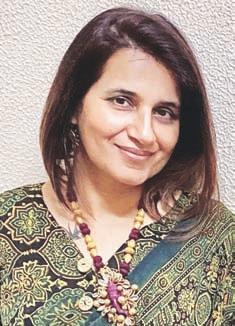
The centuries-long societal hierarchy places women in a position where they deprioritise their health
Dr Kavita Munjal Technical Operations Head (Madhya Pradesh), Metropolis Healthcare

While
breast cancer continues to be a predominant concern,there is a silver lining in the declining trend of cervical cancer
Dr Samdapa Dessai Consultant - Gynecological Cancer and Robotic Surgeon,P.D.Hinduja Hospital and Medical Research Centre, Mahim
As we celebrate Women’s Day on March 8th, it is crucial to reflect on the unique healthcare challenges confronting women worldwide. Among these challenges, the rising prevalence of cancer stands as the number one threat to women’s health and well-being.
And hence it is important to delve into the details of this pressing issue, unraveling the trends, challenges, and innovations driving the fight against cancer in women.
Rising cases of cancer among women: Trends & insights
According to the 2020 Global Cancer Observatory registry, females constituted 47.8% of the total 19,292,789 global incident cases, 44.5 per cent of the
total 9,958,133 deaths, and 50.9 per cent of the total 50,550,287 5-year p revalent cases. This data suggests that globally, cancer in females may be slightly more curable with better outcomes than in males. However, studies and surveys have proven a disproportionate impact of cancer on the lives and livelihoods of women, especially those in low-income or middle-income countries. This disparity is predominantly due to factors such as lack of awareness, lower literacy rates, psycho-socio-cultural hindrances, and self-neglect.
Dr Kavita Munjal, Technical Operations Head (Madhya Pradesh), Metropolis Healthcare said, “They say, "Men Are from Mars, Women Are From Venus." And when it comes to health and disease, this gender

Breast cancer remains the most prevalent cancer among women, followed closely by gynecological malignancies such as ovarian,cervical, and uterine cancers
Dr Karishma Kirti Consultant,Breast Specialist & Oncoplastic surgeon- Jaslok Hospital & Research Centre,

Limited access to screening and early detection, particularly in rural areas,results in diagnoses often occurring at advanced stages, making treatment more challenging
Mohan Jain Managing Director,Naprod Life Sciences

Robotic surgery ensures maximal removal of cancerous tissue, potentially improving patient outcomes and quality of life
Dr Urmila Soman Lead Consultant,Minimally Invasive Gynaecology,Robotic & Laparoscopic Surgeon, Apollo Adlux Hospital, Angamali
gap still exists due to both biological and gender-related differences between the two. Men often perceive themselves as the stronger sex, given their larger size, more muscular build, and physical strength compared to women. However, when it comes to health, it's a different story – men are often considered the weaker sex.”
“Statistics consistently show that in terms of longevity and life expectancy, women continue to outpace men decade after decade, with this gap widening over time. While this may seemingly prove that women are the stronger species on this planet, studies and data reveal a different reality. So where does the lack lie? What creates the gap that makes women more vulnerable to diseases and cancer? The
centuries-long societal hierarchy places women in a position where they deprioritise their health, considering their own needs less important than others. This results in long-unattended, neglected diseases, and advanced stages of cancers among women.”
According to Dr Samdapa Dessai, Consultant - Gynecological Cancer and Robotic Surgeon, P. D. Hinduja Hospital and Medical Research Centre, Mahim, “Recent years have witnessed the concerning uptick in cancer rates among women, driven by a multifaceted interplay of factors. While breast cancer continues to be a predominant concern, with rising incidence rates in India, there is a silver lining in the declining trend of cervical cancer. This positive shift can be at-
tributed to improved awareness, screening programs, and vaccination initiatives. Beyond reproductive organs, cancers affecting organs like the gallbladder and thyroid are also witnessing a concerning rise. Exploring the intricate links between environmental exposures, genetic predispositions, and lifestyle choices is crucial for a holistic understanding of the evolving cancer landscape in women.”
Sharing some numbers, Dr Karishma Kirti, Consultant, Breast Specialist & Oncoplastic surgeon- Jaslok Hospital & Research Centre, Mumbai mentions, “According to the GLOBOCAN 2020 data, breast cancer, cervical cancer, ovarian cancer, and uterine cancer rank among the top 10 most common cancers affecting
EXPRESS HEALTHCARE March 2024 22 cover )

With the boom in AI and newer technologies like genomics and radiomics the disease is picked up very easily
Dr Meinal Chaudhry Director-Radio Diagnosis and Intervention Radiology, Aakash Healthcare, New Delhi

By harnessing the power of AI, healthcare providers can reshape treatment paradigms
Dr Pavithran K Head of Department, Medical Oncology and Hematology, Amrita Hospital, Kochi

The integration of preventive strategies,early detection key in the ongoing battle against cancer in the female population
Dr Shriniwas Kulkarni Consultant Medical Oncologist,Sahyadri Super speciality Hospital, Hadapsar,Pune

CRISPR is a very revolutionary technology which is helpful in treating and preventing cancer
Dr Pallavi Panse Consultant-Gynaecology, Jupiter Hospital, Pune
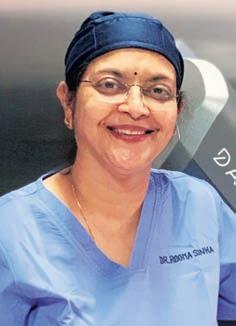
Investing in R&D to advance such technologies and make it more accessible will be instrumental in overcoming barriers to its widespread adoption
Dr Rooma Sinha President- Association of Gynecological Robotic Surgeons of India,Senior Gynecologist,Robotic and laparoscopic surgeon,Apollo Hospitals,Hyderabad
females globally. Breast cancer remains the most prevalent cancer among women, followed closely by gynecological malignancies such as ovarian, cervical, and uterine cancers. Moreover, lung cancer, traditionally associated with smoking, is also on the rise among women, highlighting the need for comprehensive prevention and early detection strategies.”
Over the years, cancer has become increasingly treatable. Yet, every four minutes an Indian woman loses their life due to breast cancer, a preventable disease. The significant rise in the prevalence of cancer among Indian women threatens to engulf many lives. It has become increasingly vital to empower women with the knowledge and solutions to defeat the disease.
Mohan Jain, Managing Director, Naprod Life Sciences emphasises that, “Data from the International Agency for Research on Cancer (IARC), the cancer agency of the World Health Organization (WHO) paints a grim picture. The numbers indicate that the new incidences of cancer among the Indian population had a higher share of women compared to men. Women also had a higher risk of developing cancer.”
“This surge among women being diagnosed with cancer encompasses various types, including breast, cervical, ovarian, and lung cancers. Compared to developed nations where early detection and accessible treatment are commonplace, the disparity in India becomes even more striking, highlighting the urgent need
for intervention. Multiple trends are contributing to the rise of cancer among women. Rising obesity, unhealthy diets, and physical inactivity are pushing cancer risks upwards. Limited access to screening and early detection, particularly in rural areas, results in diagnoses often occurring at advanced stages, making treatment more challenging. The persisting stigma and misinformation surrounding cancer also creates barriers to seeking help and treatment”, he added.
Innovations and advances in women-centric oncologycare
In India's dynamic healthcare landscape, multiple advancements and innovations have been made in advancing oncology care, particularly in
addressing the needs of women facing cancer.
From groundbreaking technologies to personalised treatment approaches, and holistic support services, these advancements are reshaping the landscape of cancer care for women across the country.
Some of the technologies and innovations are:
◆ Precision medicine and targeted therapies
The emergence of precision medicine and targeted therapies tailored to individual patient profiles is one of the most promising developments in women-centric oncology care.
Through genetic testing, molecular profiling, and biomarker analysis, oncologists can now identify specific mutations and molecular pathways driving cancer growth in
women. This enables the development of targeted therapies that are more effective and less toxic, leading to improved treatment outcomes and enhanced quality of life.
Explaining about the same, Dr Munjal shares, "Breast cancer, being biologically heterogeneous, often yields markedly different clinical outcomes among patients with similar diagnostic and clinical profiles. However, recent advances in diagnostics have revolutionised treatment approaches by allowing for the differentiation of breast cancer into distinct molecular subtypes. This enables the prescription of targeted therapies and prediction of treatment responses based on genetic and molecular characteristics.”
“A timely diagnosis facilitated
EXPRESS HEALTHCARE 23
March
2024
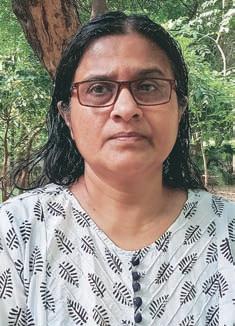
One of the contributing factors to India's higher cancer mortality rate is likely delayed diagnoses,which may be explained by low cancer awareness
Seema Bhaskaran Gender lead,Transform Rural India
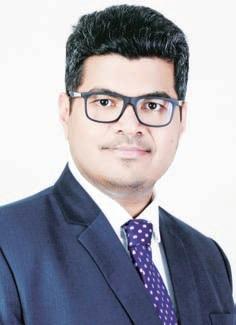
Implementing doorto-door screening programs ensures convenience and encourages participation, ultimately facilitating early detection
Dr Aditya Manake Oncosurgeon,Adhikari Lifeline Multispecialty Hospital
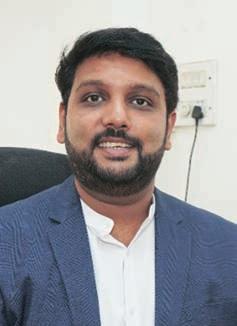
Addressing these disparities requires targeted interventions,including increasing healthcare infrastructure in underserved areas
Dr Vishesh Kasliwal Founder & CEO, Medyseva

For women,hair loss from chemotherapy carries special implications that result in social stigmas and a unique acceptance challenge
Dr Mandeep Singh Malhotra Director of Surgical Oncology at CKBirla Hospital (R),Delhi

Cancer's impact on women is a complex interplay of individual experiences,public mindset,and healthcare accessibility
Dr Shivali Ahlawat Director-Technical Operations, Oncquest Laboratories Gurugram
by comprehensive radiological and pathological workups, including advanced molecular profiling of cancer tissue, is crucial in ensuring customised and effective therapy for patients.”
◆ Minimally invasive surgical techniques
The approach to cancer treatment is also being revlutinosed by advancements in surgical techniques, offering women less invasive options with faster recovery times and reduced post-operative complications. Laparoscopic and robotic-assisted surgeries have become increasingly prevalent in the management of gynecological cancers such as ovarian, uterine, and cervical cancer, allowing for precise tumor removal while minimising trauma to surrounding healthy tissues.
Talking about robotic assisted surgery, Dr Urmila
Soman, Lead Consultant, Minimally Invasive Gynaecology, Robotic & Laparoscopic Surgeon, Apollo Adlux Hospital, Angamali said, “When it comes to treatment modalities innovative treatment options such as robotic-assisted surgery, exemplified by the Da Vinci technology, offer promising avenues for effective cancer management. With its precision and ability to access deeper pelvic areas, robotic surgery ensures maximal removal of cancerous tissue, potentially improving patient outcomes and quality of life.”
◆ Digital health solutions
Digital health solutions like Artificial Intelligence (AI), big data and others have further expanded access to specialised oncology care for women in India, particularly those residing in remote or underserved areas. Through virtual consul-
tations, remote monitoring, and tele-rehabilitation services, oncologists can provide timely and personalised care to women irrespective of geographical barriers.
Dr Meinal Chaudhry, Director-Radio Diagnosis and Intervention Radiology, Aakash Healthcare, New Delhi highlights that with the help of AI new fast more effective molecules are being produced and their phase trials outcomes generated very fast
She added, “With the boom in AI and newer technologies like genomics and radiomics the disease is picked up very easily. With the help of big data analytics and AI algorithms the evolution of precision medicine, which means medicine which is tailored to one specific patient is rapidly evolving. Various studies have shown that the cure rate of breast cancers
have really gone up in the last decade and mortality due to breast cancer is very less now. But the key is to catch the disease early and have great compliance with the treatment protocols.”
Adding to it, Dr Pavithran K., Head of Department, Medical Oncology and Hematology, Amrita Hospital, Kochi said, “By harnessing the power of AI, healthcare providers can significantly enhance early cancer detection, bridge diagnostic gaps, and reshape treatment paradigms. AI algorithms can analyse complex datasets, identify subtle patterns indicative of cancerous growth, and provide clinicians with actionable insights, thus enabling more accurate and timely diagnosis. A study from the USA found a 23 per cent increase in cancer cases identi-
fied during breast cancer screening compared with scans assessed by a radiologist. This transformative shift towards AI-driven healthcare improves patient outcomes and optimises resource utilisation and healthcare delivery, ultimately contributing to more efficient and effective cancer management strategies.”
◆ Radiation therapies
Radiation therapy remains a cornerstone of cancer treatment, and recent innovations in radiation oncology have expanded treatment options for women with various types of cancer. From intensity-modulated radiation therapy (IMRT) to stereotactic body radiation therapy (SBRT), these advanced techniques deliver highly targeted doses of radiation to cancerous lesions while sparing adjacent organs and tissues. This precision helps
EXPRESS HEALTHCARE March 2024 24 cover )

If stakeholders invest more in the healthcare industry then the treatment and awareness campaigns and research work can happen more effectively
Dr Mridul Malhotra Sr.Consultant & Head-Medical Oncology, Asian Hospital Faridabad
minimise side effects and optimise therapeutic outcomes, particularly in cases where tumors are located near critical structures.
Dr Shriniwas Kulkarni, Consultant Medical Oncologist, Sahyadri Super speciality Hospital, Hadapsar, Pune opines that, “The rising cases of cancer among Indian women, particularly breast and uterine cervical cancers, underscore the need for a comprehensive understanding of risk factors and preventive measures. As we navigate the complexities of urbanisation, lifestyle changes, and socioeconomic factors, it is crucial to leverage advancements in medical, surgical, and radiation oncology to improve outcomes and enhance the overall well-being of individuals affected by cancer. The integration of preventive strategies, early detection, and cutting-


Entrenched cultural beliefs and misconceptions further exacerbate this issue of lack of awareness,leading to delayed diagnosis and treatment
Sigal Atzmon CEO,President & Founder, Medix Global

Government and public health agencies play a critical role in shaping cancer control policies, allocating research funding,and implementing public health programs
Manisha Kumar Regional Chief Operating Officer Karnataka,HealthCare Global Enterprises
edge treatments remains key in the ongoing battle against cancer in the female population.”
Explaining about CRISPR technology, Dr Pallavi Panse, Consultant-Gynaecology, Jupiter Hospital, Pune said, “This is a gene editing technology in which doctors can edit, delete or add some bits of DNA inside cells. This is a very revolutionary technology which is helpful in treating and preventing cancer.”
Dr Rooma Sinha, PresidentAssociation of Gynecological Robotic Surgeons of India, Senior Gynecologist, Robotic and laparoscopic surgeon, Apollo Hospitals, Hyderabad highlights, “Addressing the shortage of trained gynaecological surgeons proficient in such technologies necessitates a comprehensive approach involving collaboration between medical institutions, professional asso-
ciations, and governmental bodies. By fostering partnerships with international institutions renowned for their expertise in surgical robotics training, India can leverage valuable resources and knowledge to expedite the development of skilled professionals in this specialised field. Additionally, investing in research and development to advance such technologies and make it more accessible and cost-effective will be instrumental in overcoming barriers to its widespread adoption.”
Challenges faced by women battling cancer and possible solution
Many women in India face barriers in accessing timely and quality healthcare services due to factors like geographical remoteness, financial constraints, and inadequate infrastructure in rural areas.
Gender disparities persist in access to healthcare services, particularly in developing countries and marginalised communities
Dr Suresh Advani, Senior Consultant-Medical Oncology, S.L.Raheja Hospital Mahim
Delayed diagnosis is a common challenge, resulting from insufficient screening programs, low awareness about cancer symptoms, and cultural taboos surrounding women's health issues, leading to advanced-stage diagnoses and poorer outcomes.
Seema Bhaskaran, Gender lead, Transform Rural India explains, “One of the contributing factors to India's higher cancer mortality rate is likely delayed diagnoses, which may be explained by low cancer awareness and certain cultural norms surrounding healthcare. Low cancer awareness has also fuelled misconceptions and inappropriate beliefs that cancer is incurable, transmissible, and a form of divine punishment. Female-centered cancers of the breast and cervix are also often stigmatised particularly in rural communities where
they manifest as forms of public humiliation, abuse, social isolation, loss of occupation, and marital issues. Around 87 per cent of all cancer cases were detected at advanced stages.”
According to Dr Aditya Manake, Oncosurgeon, Adhikari Lifeline Multispecialty Hospital, “Implementing door-to-door screening programs ensures convenience and encourages participation, ultimately facilitating early detection. The recent introduction of breast thermography as an alternative to conventional mammography marks a significant advancement in screening methodologies. Offering a non-invasive, doorstep solution, this innovation holds promise in enhancing accessibility to breast cancer screening.”
Cancer treatment can impose significant financial strain on women and their families, with costs encompassing diagnostics, surgery, chemotherapy, radiation therapy, medications, and supportive care, often leading to catastrophic healthcare expenditure and financial distress.
Emphasising on the gender disparity as one of the common issues, Bhaskaran said, “The deterring factor in seeking early care is the stigma of social embarrassment and isolation among women. Women not only fear death and contagion by cancer but also fear that their family’s reputation would suffer if people knew of their cancer diagnosis, including potential difficulties in their daughter’s wedding. It is also a widespread assumption that cancer, especially in the private parts (breast and genitals) is linked to “bad” and “immoral behaviour”.
“More than half of the women were observed to have a delay of more than 90 days in seeking care. The patient-related delay was observed to be 6.1 weeks, and the system-related delay was 24.6 weeks with a mean total delay of 29.4 weeks in treatment. This led to a poor prognosis. These delays may be attributed partly to the ever-increasing patient load on the
March 2024 EXPRESS HEALTHCARE 25
healthcare system and competing priorities”, she added.
Dr Suresh Advani, Senior Consultant – Medical Oncology, S.L. Raheja Hospital Mahim mentions, “Gender disparities persist in access to healthcare services, particularly in developing countries and marginalised communities. Socioeconomic factors, cultural beliefs, and systemic barriers contribute to disparities in screening, diagnosis, treatment, and survivorship care. Women from disadvantaged backgrounds often face greater challenges in accessing timely and quality healthcare services, leading to disparities in cancer outcomes.”
Dr Vishesh Kasliwal, Founder & CEO, Medyseva also believes, “Addressing these disparities requires targeted interventions, including increasing healthcare infrastructure in underserved areas, implementing culturally sensitive outreach programs, and advocating for equitable healthcare policies.”
When women battle cancer, they navigate a unique set of challenges that extend beyond the physical aspects of the disease. Cancer has a different effect on women in the Indian social setting, where gender stereotypes are still prevalent. Unlike their male counterparts, many women contribute significantly to the family income and serve as the primary caregivers for multiple generations. When a woman is diagnosed with cancer, the effects on her family, friends, and economy are in-
creased by her dual function.
Dr Mandeep Singh Malhotra, Director of Surgical Oncology at CK Birla Hospital (R), Delhi stresses, “For women, hair loss from chemotherapy carries special implications that result in social stigmas and a unique acceptance challenge. Beyond just physical changes, the problem has a significant impact on how society views women and their sense of self. Reproductive concerns add another layer of complexity to the challenges. While the impact of cancer treatments on male fertility is acknowledged, there is a notable dearth of conversation about the reproductive challenges women face. Women dealing with breast cancer, endometrial cancer, ovarian cancer, or cervical cancer often grapple with the loss of reproductive organs, impacting their identity and psychological wellbeing.”
Dr Shivali Ahlawat, Director - Technical Operations, Oncquest Laboratories Gurugram also said, “In the fight against cancer, women usually face multifaceted challenges that extend beyond the realms of physical and mental health. Cancer's impact on women is a complex interplay of individual experiences, public mindset, and healthcare accessibility. Unique hurdles, such as heightened concerns about body image, especially post-breast cancer or cervical cancer-related surgery and treatment, mark the journey. The emotional toll is com-
pounded by issues surrounding sexuality, fertility, and pregnancy after undergoing cancer treatment. These challenges often intertwine with broader issues of women's rights as affected individuals navigate stigmas and confront barriers to accessing comprehensive healthcare services. The need for a holistic approach to address both the physical and psychological aspects of cancer becomes evident, emphasising the importance of support systems, awareness campaigns, and policy initiatives to create an environment conducive to the wellbeing of women battling this formidable adversary.”
Experts believe that addressing the challenges in cancer prevention involves a multifaceted approach.
Dr Dessai stresses, “Early detection, facilitated through systematic screening for cancers such as cervical and breast cancer, is imperative for improved outcomes. The implementation of widespread HPV vaccination stands out as a key solution to significantly reduce cancers associated with the human papillomavirus. Ensuring easy access to healthcare facilities, coupled with the provision of high-quality healthcare services, is crucial in the broader strategy to reduce cancer rates.”
Dr Mridul Malhotra, Sr. Consultant & Head-Medical Oncology, Asian Hospital Faridabad opines that if stakeholders invest more in the healthcare industry then the treatment
and awareness campaigns and research work can happen more effectively.
Explaining the importance of raising awareness, Sigal Atzmon, CEO, President & Founder, Medix Global said, “There is a lack of awareness amongst Indian women, especially in rural and underserved areas, about cancer risk factors, symptoms, and the importance of early detection and regular screenings for cancers like breast and cervical cancer. Cancer is treatable more than ever with advancements in treatment, but it's still better to prevent it or at least diagnose it as early as possible. Entrenched cultural beliefs and misconceptions further exacerbate this issue of lack of awareness, leading to delayed diagnosis and treatment.”
“The government aims to encourage vaccination for girls aged 9 to 14 to prevent cervical cancer, and leveraging digital platforms and educational campaigns to educate women about cancer prevention, early detection, and the availability of government health schemes like the Ayushman Bharat Pradhan Mantri Jan Arogya Yojana (PMJAY), which provides coverage for cancer treatment, is crucial. Additionally, personal prevention and case management can play a vital role in improving awareness among patients and their families by providing personalised education, counselling, and addressing cultural or social barriers that may hinder awareness and
access to care, ultimately empowering Indian women to take proactive measures for their health, facilitating early detection and timely intervention, and improving outcomes in the fight against cancer”, she added.
Manisha Kumar, Regional Chief Operating Officer
Karnataka, HealthCare Global Enterprises also mentions, “We have to understand that this is a close-knit system. On one hand healthcare providers are responsible for early detection, diagnosis, treatment, and follow-up care, and on other the research institutions drive scientific discoveries and innovation in cancer prevention, diagnosis, and treatment. Government and public health agencies play a critical role in shaping cancer control policies, allocating research funding, and implementing public health programs.”
Wayforward
To effectively combat rising cases of cancer among women in India, it's essential to adopt a comprehensive strategy that includes raising awareness, promoting vaccination, and ensuring accessible screening. By embracing these measures and also working on the enhancement of technologies and innovations in the ecosystem, India can substantially lessen the impact of these diseases on our society.
Kalyani.sharma@expressindia.com journokalyani@gmail.com

EXPRESS HEALTHCARE March 2024 26 cover )
HEALTHCARE IT
The power of digital tools in addressing infectious diseases
Madhav Joshi ,CEO,India Health Fund in an interaction with Kalyani Sharma elaborate on the power of digitally enabled solutions in screening,diagnostics,surveillance,and supply chain management within the healthcare sector
How do you envision digitisation playing a crucial role in addressing infectious diseases, and what trends, opportunities, and challenges do you foresee in this domain?
Infectious diseases have long posed formidable challenges to public health worldwide, manifesting in outbreaks and pandemics that threaten global well-being. India, bears an outsized proportion of the burden, being home to more than 80 per cent malaria cases in South-East Asia, and 27 per cent of the global TB cases, with newer challenges like climate change and antimicrobial resistance compounding the toll.
Efforts to combat these diseases have encountered numerous hurdles, ranging from inadequate healthcare infrastructure and limited access to diagnostics to antimicrobial resistance and climate change. Despite significant progress in medical science and technology, persistent barriers such as socioeconomic disparities, continue to impede effective disease control and prevention efforts.
In a country like India with a multi-layered and complex healthcare system, digital technologies such as AI, machine learning (ML), Internet of Medical Things (IoMT) offer an intuitive and obvious case for impact. Digital health solutions offer unmatched accuracy, speed of analysing medical data, accessibility in remotest locations, affordability, and cost-effectiveness. WHO has estimated that globally, the use of digital technologies

In a country like India with a multi-layered and complex healthcare system,digital technologies such as AI,machine learning (ML),Internet of Medical Things (IoMT) offer an intuitive and obvious case for impact
can help ensure 1 billion more Digital Mission people benefit from universal healthcare, 1 billion more people are better protected against health emergencies, and 1 billion more people enjoy better health & well-being. The COVID-19 pandemic accelerated the rise of digital health and established its significance in bettering the speed and accuracy of infectious disease
diagnostics, surveillance, forecasting, outbreak detection, and response. Digital health and wellness have taken root in India with supportive government efforts for creating a digital health ecosystem in the form of National Digital Health Mission (NDHM). Digital health tools can overcome the weaknesses of the current public health system and bring health services closer
to people’s homes, and underserved communities making healthcare more responsive and productive. For instance, telemedicine platforms and mobile health applications extend healthcare access to remote areas, empowering individuals to seek timely diagnosis and treatment. In addition to this, some futuristic innovations like AIbased chest X-ray solutions offer rapid and accurate diagnosis of respiratory infections, by analysing radiographic images with high precision. Similarly, cough sound-based TB screening methods utilise AI algorithms to distinguish between different types of coughs, aiding in early detection and treatment initiation. Innovative digital technologies not only improve diagnostic accuracy and treatment outcomes but also strengthen surveillance capabilities, ultimately enhancing our ability to combat infectious diseases amidst the evolving challenges posed by climate change and antimicrobial resistance. For example, AIbased digital vector surveillance solutions leverage real-time data analysis to track and predict disease transmission patterns, enabling proactive vector control measures.
The reading is on the wall: the potential for digital technologies for infectious diseases is vast and clear. But for these cutting-edge innovations to become the healthcare norm, and scale at the last mile, several barriers must be overcome.
◆ Access to data: A lack of
reliable and comprehensive data reflecting all socioeconomic categories can jeopardise the reliability of interpretations for underrepresented groups. Ensuring availability of highquality annotated data is a prerequisite for validation of digital solutions.
◆ Policy and regulatory considerations and privacy and data protection: Digital health solutions healthcare come with a fair share of ethical and legal concerns including those related to data privacy and security. Clear regulatory frameworks and policies are a must for digital solutions to become successful and sustainable.
◆ Limited funding: Strong investment is crucial for the development, deployment, and scaling of digital health solutions.
◆ Interoperability with existing health systems: Achieving seamless integration into existing setups will require standardized protocols and interfaces.
◆ Market access and adoption in public and private sectors: Once developed and validated, the solutions will need to penetrate deeply into the Indian market, which is currently fragmented and mostly a state subject.
In order to overcome these challenges and realize the potential of digital health innovations, stakeholders across the Indian healthcare sector will need to align interests and coordinate efforts in building foundations for tech readiness, increasing investment, and bringing
March 2024 EXPRESS HEALTHCARE 27
INTERVIEW
HEALTHCARE IT
healthcare professionals, patients, and providers on board. Successful implementation of digital health in healthcare hinges on collaboration among funders, government agencies, healthcare providers, researchers, and technology experts. Publicprivate partnerships, especially, have demonstrated impact by leveraging collective resources. By combining strengths, these collaborations will drive the development and implementation of digital health solutions, improving healthcare delivery and patient outcomes, creating a sustainable and transformative impact in medicine.
Can you elaborate on the power of digital or digitally enabled solutions in screening, diagnostics, surveillance, and supply chain management within the healthcare sector?
In the ever-evolving landscape of healthcare, the advent of digital and digitally enabled solutions has sparked a transformative wave. By harnessing data analytics, artificial intelligence, Internet of Things etc., they hold promise in revolutionizing patient care, streamlining operations, and advancing public health agendas. From better accessibility, affordability, accuracy and cost-effectiveness, the tools also promise to overcome healthcare disparities and empower individuals to manage their well-being effectively.
For instance, IHFsupported and Qure.ai-led qXR is an automated chest Xray screening solution that can presumptively diagnose TB within minutes. With qXR, there has been a reduction in diagnosis turnaround time, with referral for confirmatory diagnosis becoming possible in a single visit to the hospital/clinic. Owing to its high sensitivity (more than 90 per cent), the use of qXR has
shown reduction in need for follow-on testing. These improvements not only mean better health outcomes for patients, but also cost savings for the patients and health systems alike.
Swaasa, supported by IHF and led by Salcit uses AI to analyse patient’s cough sounds to detect various lung ailments, and the tool is now being adapted to screen TB patients in low-resource settings.
Platform solutions such as qXR and Swaasa, which allow detection of multiple diseases, hold immense potential to improve efficiency of screening infectious diseases, and thus generating better public health outcomes. Platform tools also deliver greater impact by being more costeffective for health systems, sustainable for innovators, and help in bridging the testing gap across diseases.
Similarly, in surveillance, IHF-supported and TrakItNow-led Moskeet is an AI-based surveillance technology that can differentiate between different mosquito species of based on their wing-beat frequencies (analysed through machine learning algorithms) in real-time and enable effective vector surveillance and control activities for Malaria, Dengue, Chikungunya, Japanese Encephalitis and Zika Virus. Moskeet gathers and interprets disease surveillance data 20 times faster, 3 times more accurately, and at 15 per cent of the current cost of manual methods i.e. nearly 85 per cent savings on surveillance with value addition of realtime data. It has also led to a reduction in fumigation costs by 20 per cent through identification of more effective pesticides.
What specific advantages do these digital solutions bring to the table in terms of efficiency and accuracy?
Digital solutions offer unparalleled advantages in combating infectious diseases, significantly enhancing
efficiency and accuracy in various aspects of public health response. Through real-time data tracking and analytics, these solutions enable rapid identification of outbreaks, facilitating timely interventions and resource allocation. Automation streamlines surveillance processes, reducing manual errors and ensuring the swift dissemination of critical information. Digital tools also promote collaboration among healthcare professionals, researchers, and policymakers, fostering coordinated efforts to mitigate the spread of infectious diseases. For instance, Medprime’s artificial intelligence algorithm for malaria detection uses machine learning to accurately detect, identify and differentiate between malarial parasites (P. falciparum and P. vivax). This tool is particularly useful in identifying infections with low-parasite loads, which are commonly missed by conventional microscopy.
Another example is IHFsupported and Sensdose Technologies-led TMEAD, which is a digital pillbox that helps TB patients adhere to their treatment. It has improved the efficiency of healthcare workers in bettering patient outcomes. The device uses IoT & cellular network technology to remind patients, dispense medication, and monitor their treatment uptake. It also notifies health workers in real time about patients’ adherence to treatment, enabling remote patient monitoring, and improving case tracking. By categorizing patients based on their level of adherence, TMEAD helps healthcare workers provide differentiated care, which becomes even more important in rural and remote setups, where there is shortage of health professionals. Further, the technology also has an indirect benefit by preventing drug-resistant tuberculosis (DR-TB) as it enables healthcare professionals to take prompt and adequate
action and prevents patients from discontinuing their TB treatment.
Could you provide an overview of the IHF's 6-step process to transform ideation into large-scale impact, especially in the context of digital health initiatives?
As a partner, financing mechanism, connector and ecosystem facilitator, IHF enables the lab to last mile journey for game-changing innovations through the following steps:
◆ Identify & prioritise problems in infectious diseases.
This is done by identifying the current need gaps in the health systems and validating them by technical experts in the ecosystem. Based on these gaps, relevant problem statements are formulated and prioritised.
◆ Search for innovative solutions such as digital health tools to help bridge those gaps. Innovative solutions are scouted by the medium of launching a need gap based “Request For Proposals” that can address these problem statements.
◆ Choose the most promising innovations and fund their development.
The applications are screened and assessed objectively on various parameters such as novelty, potential for social impact, technology readiness level etc. and are further subjected to rigorous assessments by technical & commercial experts in the ecosystem. The most promising ones are selected for milestone-based funding support.
◆ Catalyse pilot scale validation and evidence generation
The chosen innovative digital solutions are supported for conducting clinical and community validations, pilot deployment for evidence generation and technical mentorship is enabled as per their requirements.
◆ Accelerate market access and scale-up into a national
health system.
This is done by leveraging collaboration to enable adoption in public, private & global markets for the eventual scale-up of these digital solutions in the public health systems.
◆ Improve health outcomes for those in need.
These digital tools which are aimed at performing better at accuracy, accessibility, affordability and optimise resources hold the potential to contribute to reducing the number of deaths due to communicable diseases by increasing the number of persons being screened and detected, increasing the proportion of diagnosed being put on the right treatment course and enabling successful treatment completion.
Partnerships amplify everything we do from technical experts who help us identify problem statements and develop use cases; to business experts who guide us on business feasibility of projects; from implementers on the ground who help us gather evidence for projects; to scale-up partners (public and private) who drive the last mile impact with us.
Every partnership we nurture – for co-funding, codeveloping, co-deploying – is a cog in the wheel that accelerates our journey from idea to impact.
Can you share insights into IHF's digital health portfolio, highlighting key technologies or solutions that demonstrate innovation and impact?
India Health Fund’s portfolio examples
◆ Medprime has developed an AI-based detection, parasitic load calculation and species differentiation for faster and accurate diagnosis of malaria. Medprime’s artificial intelligence-based smart microscopy algorithm, locally trained by machine learning, automatically detects, identifies and differentiates between malarial parasites (P. falciparum and P. vivax). This tool will be particularly useful
EXPRESS HEALTHCARE March 2024 28
HEALTHCARE IT
in identifying infections with low-parasite loads, which are commonly missed by conventional microscopy.
◆ qXR: an automated chest X-ray screening solution to identify TB within minutes. Qure ai has developed a smartphone-based application, which uses novel AI algorithm qXR to screen patients for TB (and other lung health abnormalities including COPD, Asthma, Lung Cancer, Early stages of congestive heart failure etc.) by analyzing both analog and digital chest X-rays of a patient. This is a breakthrough in improving the identification of missed cases of TB due to the nonavailability of radiologists.
◆ Swaasa: Swaasa - an AI Platform developed by Salcit Technologies that records cough sounds from patients using a phone’s microphone and analyzes them to decode unique cough signatures and is being supported by IHF to validate its potential to detect the possible presence of pulmonary tuberculosis using a proprietary AI algorithm and gives a report in just a few seconds. This noninvasive innovation can run
CONTRIBUTOR’S CHECKLIST
on any smartphone, requires no additional equipment and offers the key advantage of being used by patients themselves in the confines of their households, reducing the risk of infection spread or the need for trained staff.
◆ Moskeet: an intelligent surveillance solution to classify and predict mosquito-borne disease outbreaks. TrakItNow has developed “Moskeet”, which is the world’s first commercially available smart mosquito trap that can autonomously identify and measure concentrations of different species of infected mosquitoes in real time and enable effective vector surveillance and control activities for Malaria, Dengue, Chikungunya, Japanese Encephalitis and Zika Virus. Sensors in the device capture wing beat frequencies of the mosquitoes that are used to decipher mosquito species and gender using artificial intelligence. The Internet of things is then deployed to send the collected data in real time.
◆ TMEAD (Tuberculosis Monitoring Encouragement Adherence Drive): A digital
❒ Express Pharma accepts editorial material for regular columns and from pre-approved contributors / columnists.
❒ Express Pharma has a strict non-tolerance policy of plagiarism and will blacklist all authors found to have used/refered to previously published material in any form,without giving due credit in the industryaccepted format.All authors have to declare that the article/column is an original piece of work and if not, they will bear the onus of taking permission for re-publishing in Express Pharma.
❒ Express Pharma's prime audience is senior management and pharma professionals in the industry.Editorial material addressing this audience would be given preference.
❒ The articles should cover technology and policy trends and business related discussions.
❒ Articles for columns should talk about concepts or trends without being too company or product specific.
❒ Article length for regular columns: Between 12001500 words.These should be accompanied by diagrams,illustrations,tables and photographs, wherever relevant.
❒ We welcome information on new products and services introduced by your organisation for our various sections: Pharma Ally (News,Products,Value
pillbox that helps TB patients adhere to their treatment. It is a physical reusable device that helps TB patients successfully complete their treatment using digital adherence technology. The device is pre-filled with medicines as prescribed for the patient, which are also pre-sorted by dose. The device uses Internet of Things & cellular network technology to remind patients, dispense medicines, monitor their uptake and ring a physical alarm as well as send digital reminders when patients miss their medication. It also notifies health workers in real time about patients’ adherence to treatment, thereby easing their workload, enabling remote patient monitoring and improving case tracking. It also helps them keep a track of patient prescriptions, which reduces the time a certain patient has to spend at primary healthcare center, thus reducing the risk of spreading the disease. TMEAD is a Platform technology that can be used for any illness that has a long treatment duration.
Impact: how IHFsupported innovations are touching lives?
◆ qXR: 5 Mn people have been screened for TB using qXR including 120K in rural India. qXR has decreased the turnaround time i.e. within 2 minutes of X-ray generation, technician was alerted on TB results (data based on a TB screening study in Rajasthan). qXR has scaled to more than 370 health facilities across 25Indian states. qXR was adapted for triaging COVID-19 along with TB. IHF facilitated the fundraising and deployment of the qXR solution for COVID-19 with the Municipal Corporation of Greater Mumbai (MCGM), bolstering its COVID-19 response efforts across 15 sites in Mumbai. This joint initiative resulted in processing of 25000 chest X-rays, and reduction in COVID-19 detection time to under a minute.
◆ Moskeet: has touched 3,25,000 lives across 5 cities in India. Moskeet has shown 20X better speed of gathering and interpreting surveillance data, 3X improved surveillance
Add),Pharma Packaging and Pharma Technology Review sections.Related photographs and brochures must accompany the information.
❒ Besides the regular columns,each issue will have a special focus on a specific topic of relevance to the Indian market.
❒ In e-mail communications,avoid large document attachments (above 1MB) as far as possible.
❒ Articles may be edited for brevity,style,and relevance.
❒ Do specify name,designation,company name, department and e-mail address for feedback,in the article.
❒ We encourage authors to send their photograph. Preferably in colour,postcard size and with a good contrast.
accuracy and 85 per cent reduction in cost compared to manual methods. Owing to its autonomous operation and real-time data transmission capabilities, Moskeet holds the potential to overcome the challenges of slow manual data collection and the shortage of epidemiologists to analyse & interpret data.
◆ TMEAD has been used by more than 800 patients undergoing treatment for drug-sensitive and drugresistant TB till date in Maharashtra & Gujarat. In an external validation study conducted by IIPHG, Gandhinagar, TMEAD showed high levels of treatment adherence in the TMEAD intervention group (99 per cent) as compared to the control group (90 per cent) and the intervention has been shown to be cost-effective. The results have resulted in the recommendation of the device to the Central TB Division (CTD) for use in the National TB Elimination Program.
Kalyani.sharma@expressindia.com journokalyani@gmail.com

Email your contribution to: The Editor, Express Pharma, Business Publications Division,The Indian Express (P) Ltd, Mafatlal Centre,7th floor,Ramnath Goenka Marg, Nariman Point,Mumbai 400021 viveka.r@expressindia.com viveka.roy3@gmail.com
March 2024 EXPRESS HEALTHCARE 29
Data unityand one health: India's blueprint for sustainable AI excellence
Dr Puneet Khanduja,Lead - Health and Nutrition,MicroSave Consulting (MSC) and Anirooddha Mukherjee,Manager,MSC talks about the critical need for standardising government data collection mechanisms
In a considerably short time, Artificial Intelligence (AI) has emerged as a game-changer with immense potential to shape the future course of nations. In the Indian context, making the most of a nascent AI atmosphere depends on the establishment of robust foundations, particularly in the realm of government data collection. Especially after the COVID-19 pandemic, global focus has shifted to the humongous volume of health data being generated across various public and private platforms. India’s G20 health priorities also reflect the need to rigorously track animal-origin (zoonotic) diseases and climate shocks with human and plant overlaps, thus conforming to the One Health approach. This article explores the critical need for standardising government data collection mechanisms and enhancing data quality to pave the way for India's sustainable and impactful AI future.
India’s health data intricacies
The current health data landscape in India is a mosaic of disparate data sources. Digital interventions of varying dimensions stem from more than 40 vertical national health programs. There is the primary healthcare ecosystem, with built-in siloes, including several maternal and child health programs. Similarly, the recently digitised Integrated Health Information Platform is a stand-alone government database of outbreak-prone diseases. There is the Ni-kshay platform for tracking and managing tuberculosis cases, and the SOCH platform for tracking HIV
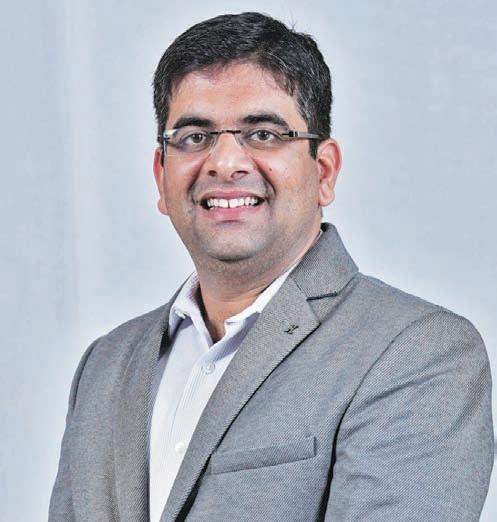

care. India now has a dedicated Centre for One Health, responsible for coordinating the national response to animal, human, and climate risks. These are just a few of the many databases that the government manages, and is trying to bridge together through a common interface.
Focus on AI-powered solutions
Capitalising on recent AI advancements, the government is simultaneously fortifying its future readiness by investing in AI-powered solutions. These solutions assist specialty physicians in diagnosing lung diseases, skin conditions, and eye problems. Another relevant example is eSanjeevani, India’s flagship teleconsultation platform, widely propagated during the COVID-19 pandemic for ensuring health service accessi-
bility. A dedicated AI unit of the Health Ministry is now developing an AI-powered chatbot to assist healthcare providers while providing teleconsultations. However, their task is made slightly cumbersome by the irregular entry of patient data, such as ‘fever’ being indicated as both the diagnosis and the symptom in some records. This is precisely why uninterrupted, HIGH-QUALITY data availability is a prerequisite to formalising AI solutions.
Need for standardising large-scale data collection
It is imperative to streamline and standardise the data-collection processes to fully harness the power of AI for informed decision-making. A unified approach to public health data collection can help facilitate interoperability, en-
abling seamless integration of diverse datasets. Voluntary and periodic data quality audits by government database owners and managers can build system-level safeguards, that in turn, can enable policymakers to overcome the inherent deployment hesitancy for AI solutions. Moreover, the overall gains of a robust data architecture for each of the core One Health domains are already widely recognised.
Identifying best practices for scale-up
A single-window entry platform for all government-administered national health programs may be a workable solution to aid uniform data collection and reporting. The UT of Dadra and Nagar Haveli has initiated a similar exercise by deploying a platform called ‘e-Aarogya’. This platform enables seamless data flow be-
tween multiple government health databases and reduces manual entry of data. The Health Department of Maharashtra is also actively trying to integrate such a solution to enable its front-line health workers. Such initiatives have the potential to generate valuable insights for improving and scaling up workable solutions for the entire country.
Having standardised data across different sectors, like healthcare and education, can lead to better public services and efficient resource allocation. This will require collaboration between policymakers, technologists, and data experts to create a trustworthy and ethical data ecosystem. By establishing a solid foundation for AI through standardised and large-scale health data collection, India can position itself as a global leader in sustainable AI for health.
EXPRESS HEALTHCARE March 2024 30 HEALTHCARE
IT
Dr Puneet Khanduja
Anirooddha Mukherjee
POLICY
Navigating newfrontiers: Astrategic shift for India’s USI program
Ranjan Kumar Jha,Senior Program Officer-Universal Salt Iodisation (USI) and Fortification, Nutrition International India,and Dr Chandrakant Pandav,Padma Shree Awardee (2021) and Member of Rashtriya POSHAN Abhiyan Prime Minister's Overarching Scheme on nutrition talks about India's USI program
India's USI program has been a remarkable success story, bolstered by evidence-based policy formulation, collaborative efforts, and industry engagement. Iodine is an essential micronutrient critical for optimal brain development, particularly during fetal and early childhood stages.
USI is a proven, sustainable, and cost-effective solution to address iodine deficiency at the country level. For more than six decades, the Government of India has been working to ensure its population has access to this critical micronutrient. Implementing the National Goitre Control Program in 1962 saw India become the first country in South Asia to introduce a scaled-up salt iodisation program. In 1992, the government further solidified its commitment to public health by renaming the program to the National Iodine Deficiency Disorders Control Program and mandating the iodisation of all edible salt for human consumption.
Since then, the salt industry in collaboration with the public and private sectors has been instrumental in creating production capacity by complying with national standards to ensure the availability of adequately iodised salt nationwide. Popularising iodized salt through innovative packaging, public service announcements, and memorable slogans such as “dana-dana ek samaan” (uniformity in every grain of salt) have irreversibly changed consumer preferences for salt. Additionally, the Salt Department under the Ministry of Commerce and In-
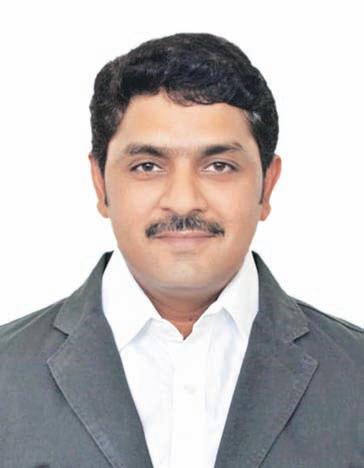

While India has made significant strides in iodised salt production,there is still work to be done
dustries has played a pivotal role as the nodal agency, providing quality control and regulatory oversight. These sustained efforts have resulted in significant progress on salt iodisation in India. Today, almost all edible salt is conveniently packaged in retail pouches of 1kg or less, with 83 per cent being refined and adequately iodised. The country has also been successful in increasing its production of iodised salt from only 2 lakh metric tonnes in 1970 to 72 lakh metric tonnes in 2021-22.
The National Health and Family Welfare Survey (NFHS- 4 and 5) also revealed that 94 per cent of households in India
consume adequately iodised salt, marking notable gains in public health outcomes.
While this success is something to celebrate, we must remember that challenges persist. The misconception that USI is a completed goal has led to reduced budget allocations and the closure of critical agencies like the Salt Department under the Ministry of Commerce and Industries.
The National Iodine and Salt Intake Survey – 2014-15 and the India Iodine Survey 201819, conducted by Nutrition International and the Indian Coalition for the Control of Iodine Deficiency Disorders, indicate that although state cov-
erage ranges from 61-99 per cent, national gains have plateaued at around 76 per cent, leaving a quarter of the population at risk of iodine deficiency disorders. As iodised salt is still the primary source of dietary iodine, it is crucial to shift our focus from mere access to iodised salt at the household level to ensuring adequate iodised salt to meet the recommended daily requirement of 150 μg. Achieving these goals requires renewed political commitment across the country.
As we move closer to 2047 and aim to achieve India’s vision of ‘Amrit Kaal’, redirecting our focus to subnational
levels becomes imperative. We must sustain progress in states with high coverage and devise tailored state-specific strategies for those below the national average. Additional challenges such as high sodium intake, processed food consumption, and preferences for non-iodised salt demand innovative solutions. Policymakers and influencers must adapt to the evolving landscape, changing consumer preferences as well as global and national experiences to keep the momentum steady.
Harmonising the USI program with the government’s commitment to a 30 per cent relative reduction in salt intake by 2025 offers a strategic opportunity to avoid a reversal in the gains achieved in USI. Towards these efforts, the Indian Council of Medical Research could consider expanding the National Non-Communicable Disease Monitoring Survey to include the median urinary iodine concentration of the population to provide policymakers with the relevant data to assess and align iodine standards with reduced salt intake.
While India has made significant strides in iodised salt production, there is still work to be done. Adapting the program to address emerging challenges while continuing to ensure optimal iodine nutrition presents an opportunity to safeguard demographic dividends and contribute to economic goals as we work towards realising our goal of a USD 5 trillion economy. Sustaining success in USI is not just a public health imperative but a vital investment in the future of our nation.
March 2024 EXPRESS HEALTHCARE 31
Ranjan Kumar Jha
Dr Chandrakant Pandav
MEDTECH
Role of medtech and NGS in cancer detection
Dr Suresh Thakur,President - Scientific Affairs,Trivitron Healthcare explains how the integration of advanced technologies
Medtech and Next Generation Sequencing (NGS) have emerged as transformative forces in the field of cancer detection and treatment, revolutionising the way we understand, diagnose, and address this complex disease. The integration of advanced technologies has significantly improved our ability to personalise cancer care, offering patients more targeted and effective treatment options.
Medtech, short for medical technology, encompasses a broad spectrum of innovations designed to enhance healthcare delivery. In the context of cancer detection and treatment, medtech plays a pivotal role in various stages of the patient journey. From early detection to post-treatment monitoring, these technologies contribute to a more comprehensive and nuanced approach to cancer management.
One of the key applications of medtech in cancer detection is the development of advanced imaging techniques. High-resolution imaging technologies, such as positron emission tomography (PET) and magnetic resonance imaging (MRI), enable healthcare professionals to visualise tumors with unprecedented clarity. This allows for early identification of cancerous growths, facilitating prompt intervention and increasing the likelihood of successful treatment outcomes.
Mammography, a specialised radiographic technique, has played a pivotal role in breast cancer detection. This imaging method utilises low-dose X-rays to capture detailed images of the breast tissue. Mammograms have proven to be highly effective in detecting breast abnormalities, including early-stage tumors that may not be palpable during physical examinations. Regular mammographic screening has emerged as a pivotal tool in the early detec-
has improved the ability to personalised cancer care

In tandem with medtech,NGS has emerged as a revolutionary tool in unraveling the genetic complexities of cancer.NGS,a high-throughput sequencing technology,enables the rapid and cost-effective analysis of entire genomes or specific gene regions
tion of breast cancer, facilitating prompt intervention and contributing to enhanced survival rates.
Furthermore, medtech has paved the way for the creation of minimally invasive diagnostic procedures. Techniques like liquid biopsy, which involves analysing circulating tumor cells and fragments of DNA in the bloodstream, provide a less invasive alternative to traditional tissue biopsies. This not only reduces patient discomfort but also allows for more
frequent monitoring, enabling healthcare providers to track the evolution of the disease in real-time.
Another noteworthy development in cancer detection is the application of Artificial Intelligence (AI) and machine learning algorithms. These technologies scrutinise extensive medical data to detect patterns and anomalies that might escape notice from human observers. AI-powered diagnostic tools assist in interpreting medical images, predicting
cancer risk, and recommending personalised treatment plans based on individual patient data.
Moreover, robotic-assisted surgery has become an integral part of cancer treatment. Surgical robots, controlled by skilled surgeons, enable minimally invasive procedures with enhanced precision and dexterity. This results in shorter recovery times, reduced postoperative complications, and improved overall patient outcomes.
In tandem with medtech, NGS has emerged as a revolutionary tool in unraveling the genetic complexities of cancer. NGS, a high-throughput sequencing technology, enables the rapid and cost-effective analysis of entire genomes or specific gene regions. This has profound implications for cancer diagnosis and treatment, as it allows for a detailed understanding of the genetic alterations driving the disease.
NGS facilitates the identification of specific genetic mutations or alterations that contribute to the development and progression of cancer. By decoding the genomic landscape of a tumor, healthcare professionals can tailor treatment strategies to target the unique genetic makeup of each patient's cancer. This personalised approach, known as precision medicine, represents a paradigm shift in cancer treatment, moving away from onesize-fits-all approaches towards more targeted and effective therapies.
In addition to aiding in the diagnosis of cancer, NGS also plays a crucial role in monitoring treatment response and detecting the emergence of resistance mechanisms. Regular genomic profiling through NGS allows healthcare providers to adapt treatment plans based on the evolving genetic profile of the tumor. This dynamic approach is particularly valuable
in the context of cancers that are prone to acquiring resistance to standard therapies.
NGS contributes to the field of immunotherapy, a revolutionary approach to cancer treatment that harnesses the body's own immune system to target and eliminate cancer cells. By understanding the genetic markers associated with a patient's tumor, healthcare professionals can identify potential targets for immunotherapy and design personalized treatment regimens that enhance the body's ability to fight cancer.
The integration of medtech and NGS in cancer detection and treatment exemplifies the shift towards a more patientcentric and data-driven approach. These technologies empower healthcare professionals with the tools to make informed decisions based on the unique genetic profile of each patient's cancer. As a result, the era of precision medicine is ushering in a new era of hope for patients, offering the promise of more effective treatments with fewer side effects.
Combination of medtech and NGS provides unparalleled technology amalgamation of In-vivo and in-vitro diagnostics tools respectively for the early diagnosis of cancer.In current scenario this combination ensures early detection of cancer and resultantly helps clinicians to recommend relevant therapeutic intervention.
The role of medtech and NGS in cancer detection and treatment is pivotal in shaping the future of oncology. These technologies contribute to early detection, personalised treatment strategies, and ongoing monitoring, ultimately improving patient outcomes and quality of life. The synergy between medtech and NGS holds great promise in the ongoing battle against this formidable disease.
EXPRESS HEALTHCARE March 2024 32









































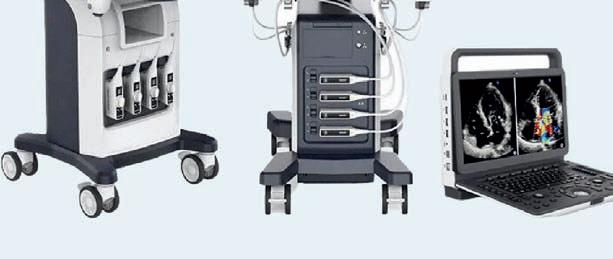


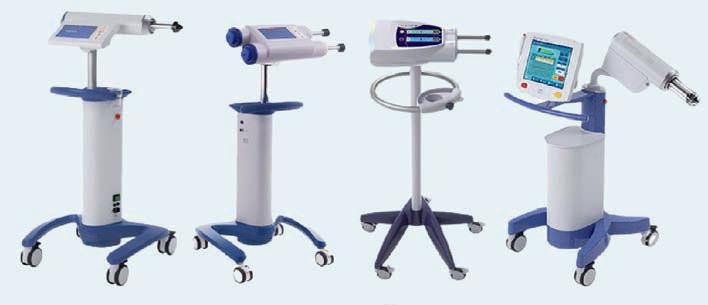



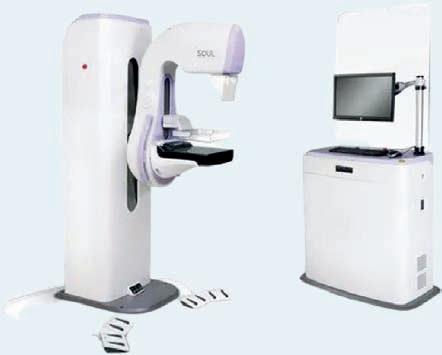




BUSINESS AVENUES EXPRESS HEALTHCARE EXPRESS HEALTHCARE March 2024 33 www.hemantsurgical.com LET'SGROWWITHUS OURPRODUCTS HemantSurgicalisaone-stopsolutionfor imagingequipment,providingawiderange ofproductsandservicestohospitals, clinics,andotherhealthcareproviders. sales@hemantsurgical.com ONE-STOPSOLUTIONFOR IMAGINGEQUIPMENT ACultureofCare HemantSurgicalIndustriesLtd. UltrasoundMachine CRSystem Single,Double,MRI,DSAInjector MammographyMachine Prudent1717/1417 DRSystem MammoDetector JOINUSANDBECOMEAPARTOFTHEFUTUREOFHEALTHCARE. 24*30/18*24 ListedOn +918425840446


















BUSINESS AVENUES EXPRESS HEALTHCARE March 2024 EXPRESS HEALTHCARE 34






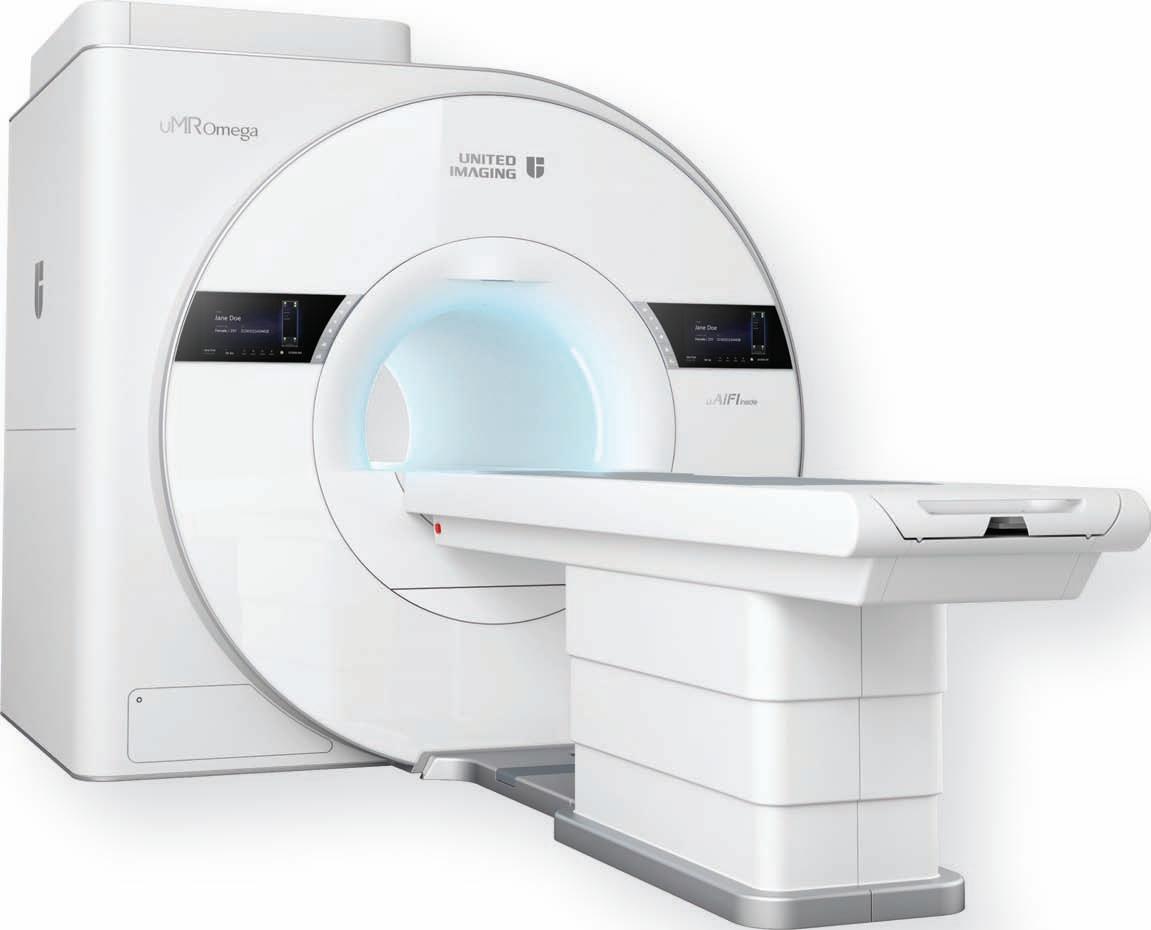






BUSINESS AVENUES EXPRESS HEALTHCARE EXPRESS HEALTHCARE March 2024 35











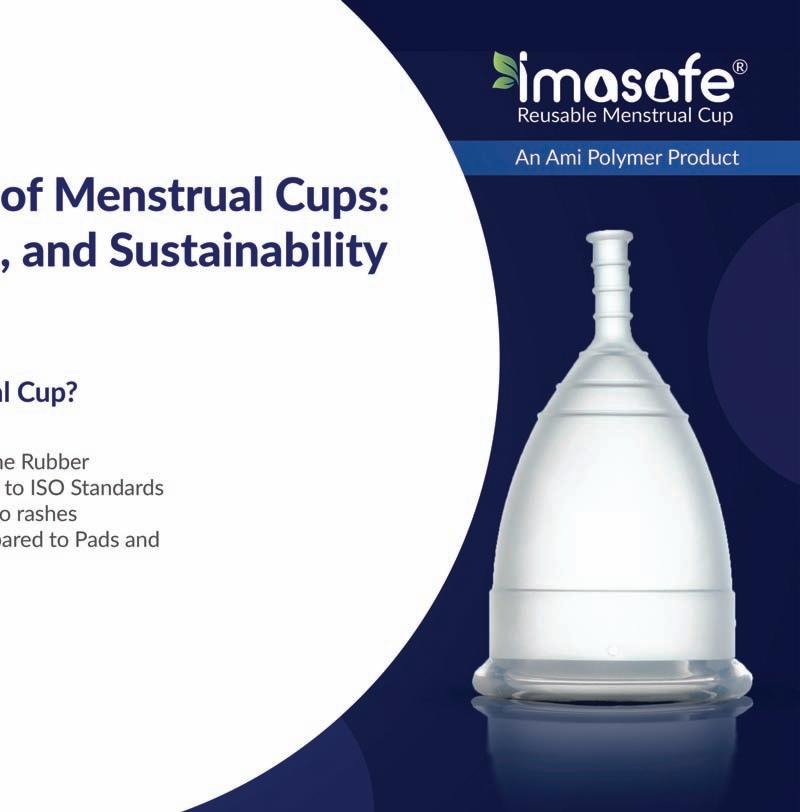




SILICONETRANSPARENTTUBING M.K.SiliconeProductsPvt.Ltd. fortheQualityConscious…. INDIA QM002 AnISO9001-2015COMPANY Quality Products Since 1997 CERTIFIED CLEA N ROOM IS08 BlueHeaven 208,HillViewIndustrialPremises, AmrutNagar,Ghatkopar(W),Mumbai-400086,India. Mob.:9321965968/9869412342 E-mail:sales@mksilicone.com BUSINESS AVENUES EXPRESS HEALTHCARE March 2024 EXPRESS HEALTHCARE 36 To Advertise in Business Avenues Email: rajesh.bhatkal@expressindia.com rbhatkal@gmail.com
RevolutionizeBloodProductVerificationwith InnovativeIrradiationConfirmationMethod

KEYFEATURES:
➨ Simplicitywithin-depthinsights.
➨ FunctionsasaYES/NOdevice,ensuringcompliancewithEuropean/UK/AABBguidelinesfordoseranges.
➨ Adaptabletosyringes,especiallysuitableforneonatalapplications.
➨ AvailableinbothGammaandX-rayversions.
➨ Soleindicatorguaranteeingthatthedelivereddosealignswithrecommendedlimits(25Gyto50Gy) forbloodanditscomponents.
➨ Includesprintedlotnumber(barcode)andexpirationdatefortraceability.
➨ Swiftorderprocessingwithacommitmenttoqualityandexceptionalcustomerservice.

No.127,BussaUdyogBhavan,TokershivrajRoad,SewriWest,Mumbal-400015,Maharashtra, Landline:+91022-24166630Mobile:+919833286615


BUSINESS AVENUES EXPRESS HEALTHCARE EXPRESS HEALTHCARE March 2024 37




































BUSINESS AVENUES EXPRESS HEALTHCARE March 2024 EXPRESS HEALTHCARE 38
HEALTHCARE TRACKER
SysmexCN-series coagulation analysers epitomise cutting-edge technologyin the realm of hemostasis testing
Srinivas Naidu,Senior Product Manager-Coagulation,Marketing,Sysmex explains about CN-Series Coagulation Analyzer
Sysmex Corporation, a global leader in healthcare solutions, offers cutting-edge technology in the field of coagulation diagnostics. Sysmex's coagulation systems are designed to provide accurate and timely results to aid in the diagnosis and management of various coagulation disorders.
One of Sysmex's flagship products is its coagulation analyser, which utilises advanced clot detection methods to assess a patient's coagulation profile efficiently.
The Sysmex CN-Series Coagulation Analysers epitomize cutting-edge technology in the realm of hemostasis testing. These analysers are designed to cater to the diverse needs of modern laboratories, offering a comprehensive range of coagulation tests with unparalleled accuracy and efficiency. Equipped with advanced features, the CNSeries analyzers are at the forefront of enhancing diagnostic capabilities in the field of coagulation testing. At the core of the Sysmex CN-Series is its ability to deliver a wide array of coagulation tests, including but not limited to Prothrombin Time (PT), Activated Partial Thromboplastin Time (APTT), and DDimer assays. The versatility of the analyser enables laboratories to conduct routine screening tests as well as specialised assays, thus accommodating a broad spectrum of testing requirements.
Moreover, Sysmex incorporates innovative technologies such as chromogenic assays and clot waveform analysis into its coagulation systems. These technologies enhance the sensitivity and specificity of coagulation testing, enabling healthcare providers to make more informed decisions regarding patient treatment and monitoring.
One of the standout features of the CN-Series coagulation analysers is their exceptional accuracy and precision.
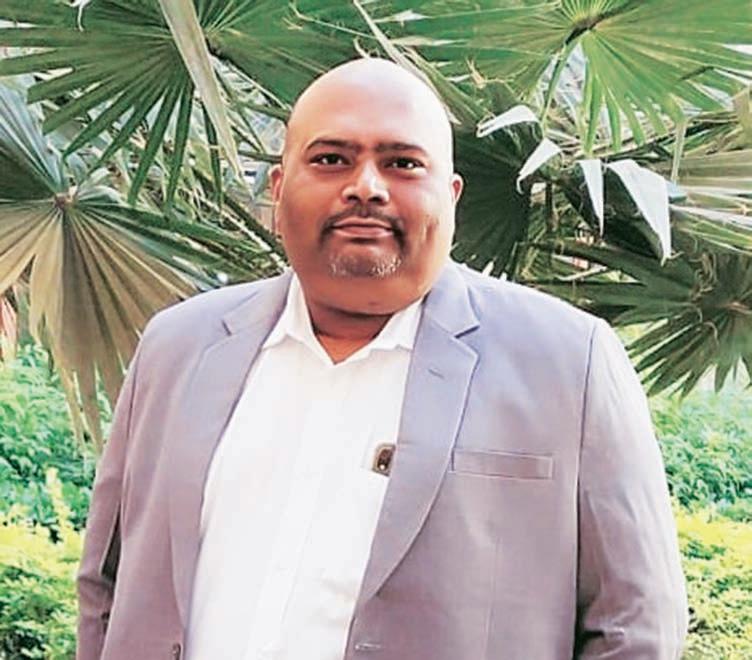
One of the standout features of the CN-Series Coagulation Analyzers is their exceptional accuracy and precision.Through the utilization of advanced optical technologies,these analyzers ensure reliable and reproducible results,crucial for making informed clinical decisions
Through the utilization of advanced optical technologies, these analyzers ensure reliable and reproducible results, crucial for making informed clinical decisions. Laboratories can depend on the consistency of results generated by the CN-Series, thereby fostering trust in the diagnostic process. Efficiency is another hallmark of the Sysmex CN-Series. These analysers are designed to streamline laboratory workflows, thereby optimising oper-
ational efficiency.
With rapid turnaround times and the capacity to process a high volume of samples concurrently, the CN-Series enhances productivity within the laboratory setting. This efficiency translates to improved patient care by expediting the diagnostic process.
Furthermore, the CN-Series coagulation analysers are characterized by their user-friendly interface and intuitive software. Laboratories can benefit from
an easy-to-navigate system that simplifies test programming, data analysis, and result interpretation. This user-centric approach enhances the overall user experience and minimises the learning curve associated with operating the analyser.
In addition to its technical prowess, the Sysmex CN-Series prioritises patient safety and data integrity. These analysers adhere to stringent quality control measures to ensure the reliability of test results. By up-
holding the highest standards of quality assurance, the CN-series coagulation analysers instill confidence in both laboratory professionals and healthcare providers.
In conclusion, the Sysmex CN-series coagulation analysers represent a pinnacle of innovation and excellence in hemostasis testing. With their comprehensive test menu, precision, efficiency, user-friendly interface, and commitment to quality, these analyzers are indispensable tools for laboratories seeking to deliver superior diagnostic services. By harnessing the power of the CN-Series, healthcare facilities can elevate their standard of care and make significant strides in the field of coagulation testing.
In addition to its technological advancements, Sysmex places a strong emphasis on user-friendly interfaces and automation features in its coagulation systems. This focus on usability ensures that laboratory staff can operate the analysers efficiently, reducing the likelihood of errors and improving overall workflow productivity. Furthermore, Sysmex offers comprehensive technical support and training programs to ensure that healthcare professionals can maximize the potential of their coagulation systems. By providing ongoing education and assistance, Sysmex helps laboratories maintain the quality and reliability of their coagulation testing processes.
Overall, Sysmex's coagulation solutions represent a cornerstone of modern hemostasis diagnostics, offering healthcare providers the tools they need to deliver accurate and timely care to patients with coagulation disorders. With a commitment to innovation, reliability, and user satisfaction, Sysmex continues to lead the way in advancing coagulation testing technologies for improved patient outcomes.
March 2024 EXPRESS HEALTHCARE 39
HEALTHCARE TRACKER
Hemant Surgical at Medicall 2024: Elevating Healthcare Together
Medicall 2024, India's leading B2B Medical Equipment Exhibition, showcased the latest in healthcare innovation. Organized by Medexpert Business Consultants Pvt Ltd and spearheaded by Dr. Manivannan S of Kauvery Hospital, the event served as a pivotal platform for networking and collaboration among healthcare professionals.
Hemant Surgical, established in 1989, participated in this prestigious event in Mumbai from February 16th to 18th. The exhibition allowed us to connect with doctors, distributors, and healthcare providers,

showcasing our comprehensive range of medical solutions.
Our participation highlighted our commitment to advancing healthcare through innovation, and we're excited about the new partnerships and
opportunities that emerged. Medicall 2024 was not just an exhibition for us but a step forward in enhancing patient care and supporting the healthcare community.
The success at Medicall 2024
signifies a pivotal moment for Hemant Surgical. It reaffirms our dedication to be at the forefront of medical innovation, contributing significantly to a future where healthcare is more accessible, efficient, and effec-
spired and more driven, ready to tackle the challenges ahead with renewed vigor and to continue our mission of supporting the healthcare sector in delivering exemplary patient care.
Unstoppable force: United Imaging revolutionising India's imaging industry
Over the past three years,UIH and Medikabazaar have worked hand in hand to revolutionise the medical imaging industry in India,setting new benchmarks for excellence and accessibility
United Imaging Healthcare (UIH) and Medikabazaar are thrilled to mark the completion of their third year of collaboration in India. Over the past three years, UIH and Medikabazaar have worked hand in hand to revolutionise the medical imaging industry in India, setting new benchmarks for excellence and accessibility.
Since the inception of their partnership in 2020, United Imaging Healthcare and Medikabazaar have achieved remarkable milestones together. The collaboration has resulted in the success of over 500 orders of AI enabled MRI, CT, and Digital PET-CT equipment, enabling healthcare institutions across India to enhance patient care and improve diagnostic capabilities.
One of the key achievements of the partnership has been the
widespread presence of United Imaging Healthcare's state-ofthe-art solutions across the country. Through Medikabazaar's extensive network and distribution capabilities, UIH's advanced medical imaging systems, including MRI, CT, and Digital PET-CT scanners, have reached healthcare facilities in even the most remote corners of India. This has significantly contributed to bridging the healthcare divide and bringing worldclass diagnostic tools within reach of millions of patients. With highly competitive technologies and ground breaking products, United Imaging Healthcare has steadily increased its brand influence and market share worldwide. Currently, more than 23,600 United Imaging products are in service across 10,700 hospitals and research institutions in 59 countries and regions worldwide, in-
cluding China, the U.S., Europe, Japan, the Middle East, India, Southeast Asia, Africa, and South America.
To ensure seamless implementation and exceptional customer experience, United Imaging Healthcare and Medikabazaar have established a dedicated service team. Comprising highly trained professionals and technical experts, the service team is readily available to provide comprehensive support, including installation, maintenance, and training, thereby maximising the value and effectiveness of UIH's cutting-edge medical equipment.
UIH securing a spot among the top three positions is truly impressive. Despite being a relatively new player in the field, UIH has swiftly gained acknowledgment for its state-of-the-art radiology products and solutions. United Imaging's dedica-
tion to providing comprehensive, all-in-one configurations along with assured upgrades has catapulted them to the forefront of the industry.
Speaking about the successful partnership, Dr Jusong Xia, PresidentofInternational Business at United Imaging Healthcare, expressed their enthusiasm, stating, "We are thrilled to celebrate our second year of partnership with Medikabazaar. Together, we have been able to make a significant impact in the healthcare landscape of India. Our collaboration has not only expanded the accessibility of advanced medical imaging solutions but also strengthened the overall healthcare infrastructure. We look forward to continued success in the coming years."
Vivek Tiwari, CEO & Founder, Medikabazaar also highlighted the significance of
the partnership, saying, "United Imaging Healthcare has been a valuable partner in our mission to transform healthcare delivery in India. By providing healthcare institutions with the latest medical imaging technology, we have enabled them to provide accurate diagnoses and improve patient outcomes. We are proud of the milestones we have achieved together and excited about the future prospects of our collaboration."
As United Imaging Healthcare and Medikabazaar enter the third year of their partnership, they remain committed to driving innovation, empowering healthcare providers, and advancing healthcare accessibility across India. With a shared vision of revolutionising healthcare, both organisations are poised to deliver even greater value and impact in the years to come.
EXPRESS HEALTHCARE March 2024 40

Aplioaintegratesindustry-leadingimaging,advancedapplications, andsmartworkflowsintoasmall,lightweightpackage.
Thesystemcanbescaledforawidevarietyofclinicalportfolios fromsharedservicestodedicated,specializedapplicationsstrengtheningyourclinicalconfidenceevenforthemost demandingcases.

©CanonMedicalSystemsCorporation2022.Allrightsreserved. ERBISENGINEERINGCOMPANYLIMITED 39SecondMainRoad,RajaAnnamalaipuram,Chennai-600028.Tel:04442961 400MailID: info@erbismedical.com
https://global.medical.canon/ Advanced.Seamless.Integrated.
REGD.WITH RNI NO.MAHENG/2007/22045,POSTAL REGD.NO.MCS/162/2022 – 24,PUBLISHED ON 8TH EVERY MONTH, POSTED ON 14TH,15TH,16TH EVERY MONTH,POSTED AT MUMBAI PATRIKA CHANNEL SORTING OFFICE,MUMBAI – 400001



















































































































































































